Warm And Windy
Late morning guest departure. Walks and bike rides.
A shame to pick it
A shame to leave it—
The violet.
—Nao-jo
Late morning guest departure. Walks and bike rides.

A shame to pick it
A shame to leave it—
The violet.
—Nao-jo
Caves here from Colorado.

Dysfunctional sump pump. Discovered while swapping a couple of storm windows for screens. So instead of an outing, it was out with the old and in with the new. Nothing beats a little Easter plumbing. (Minor overflow, no damage. )
But, by afternoon, outings were back on track, including a bike ride from Milton to Fort along the surprisingly interesting Glacial river Trail. (Strong tail wind, too.)

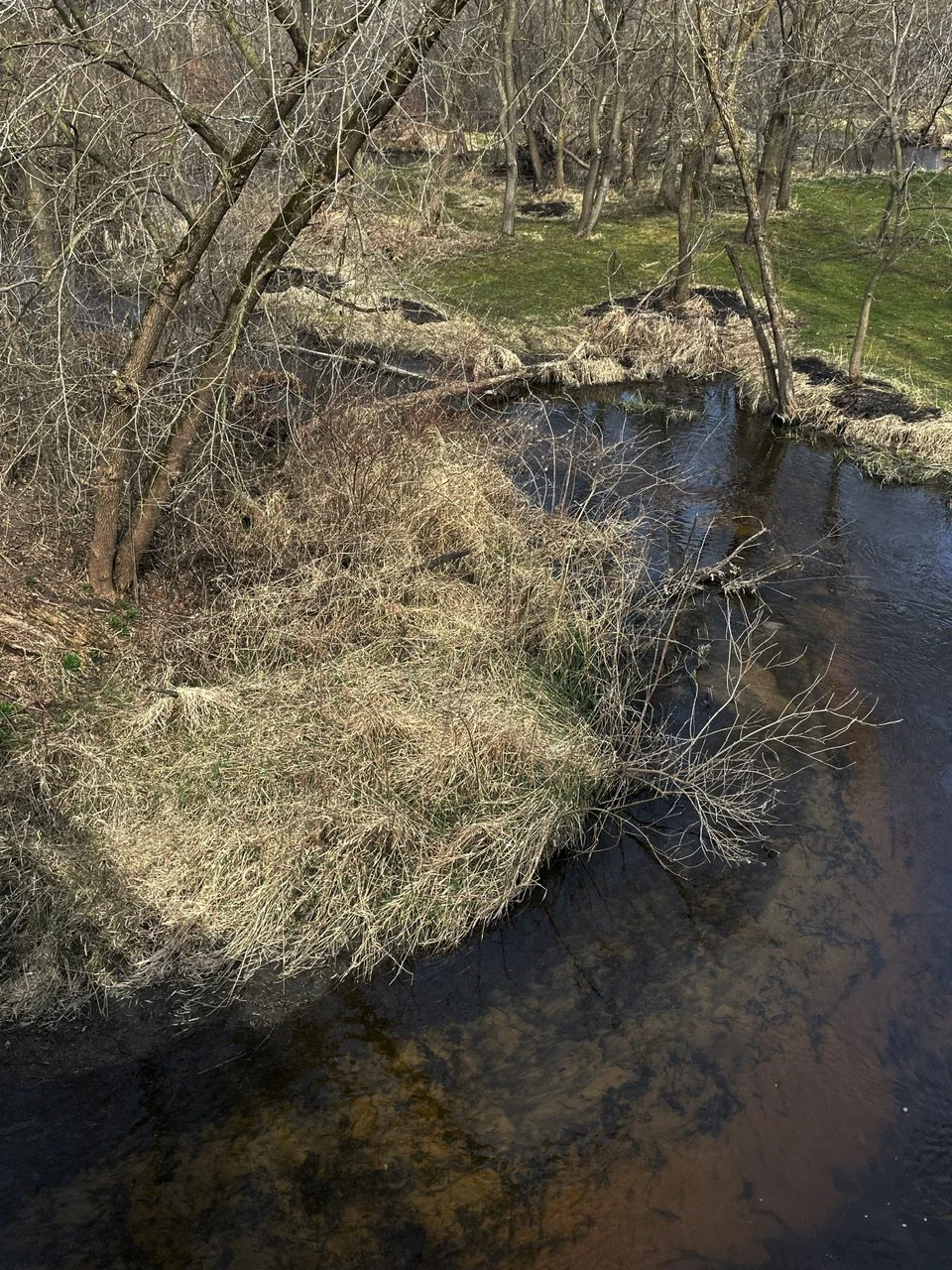
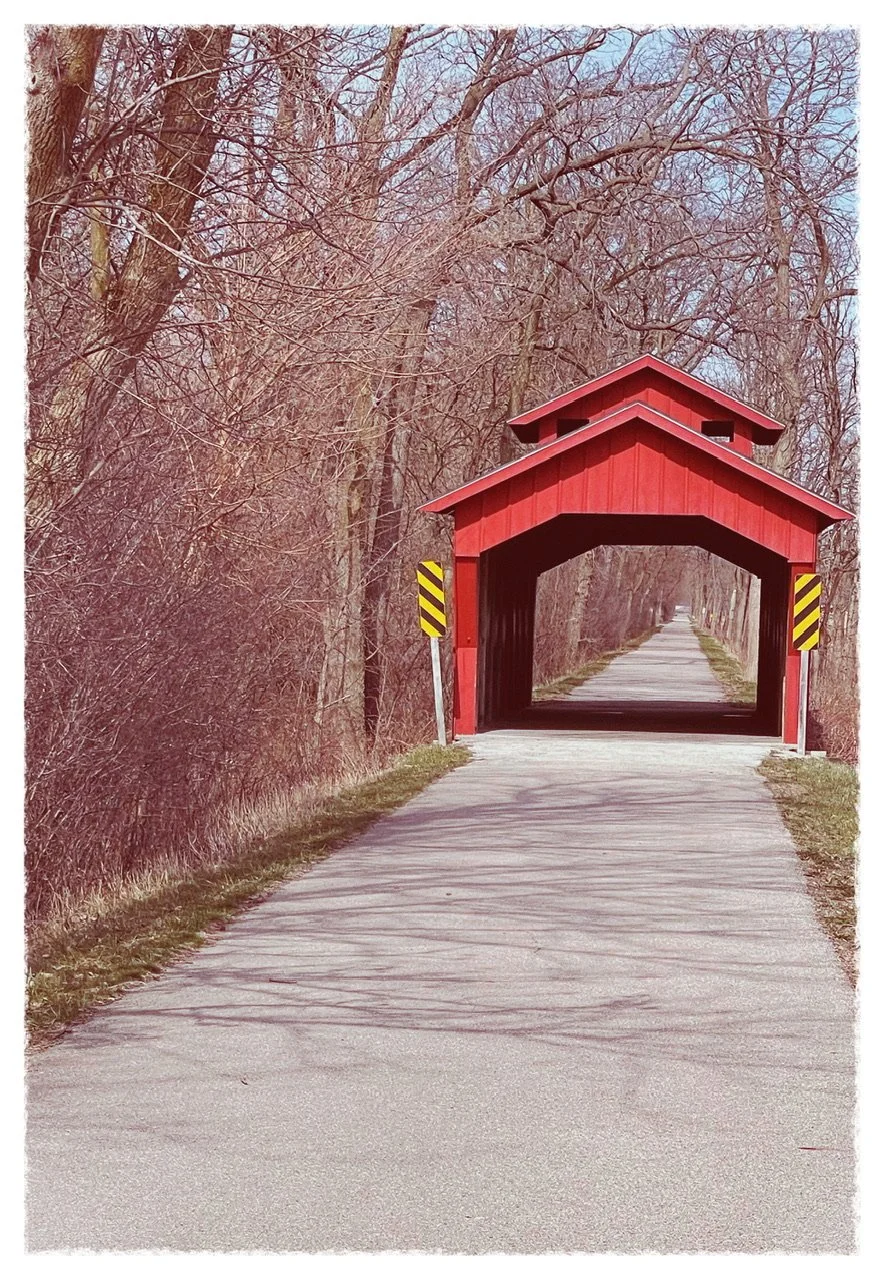
…shirtsleeves weather. Perfect. While Sue birthday shopping with Ellie, the garage got the Augean Stables treatment, and then it was on to tree cookies, and other related diversions.
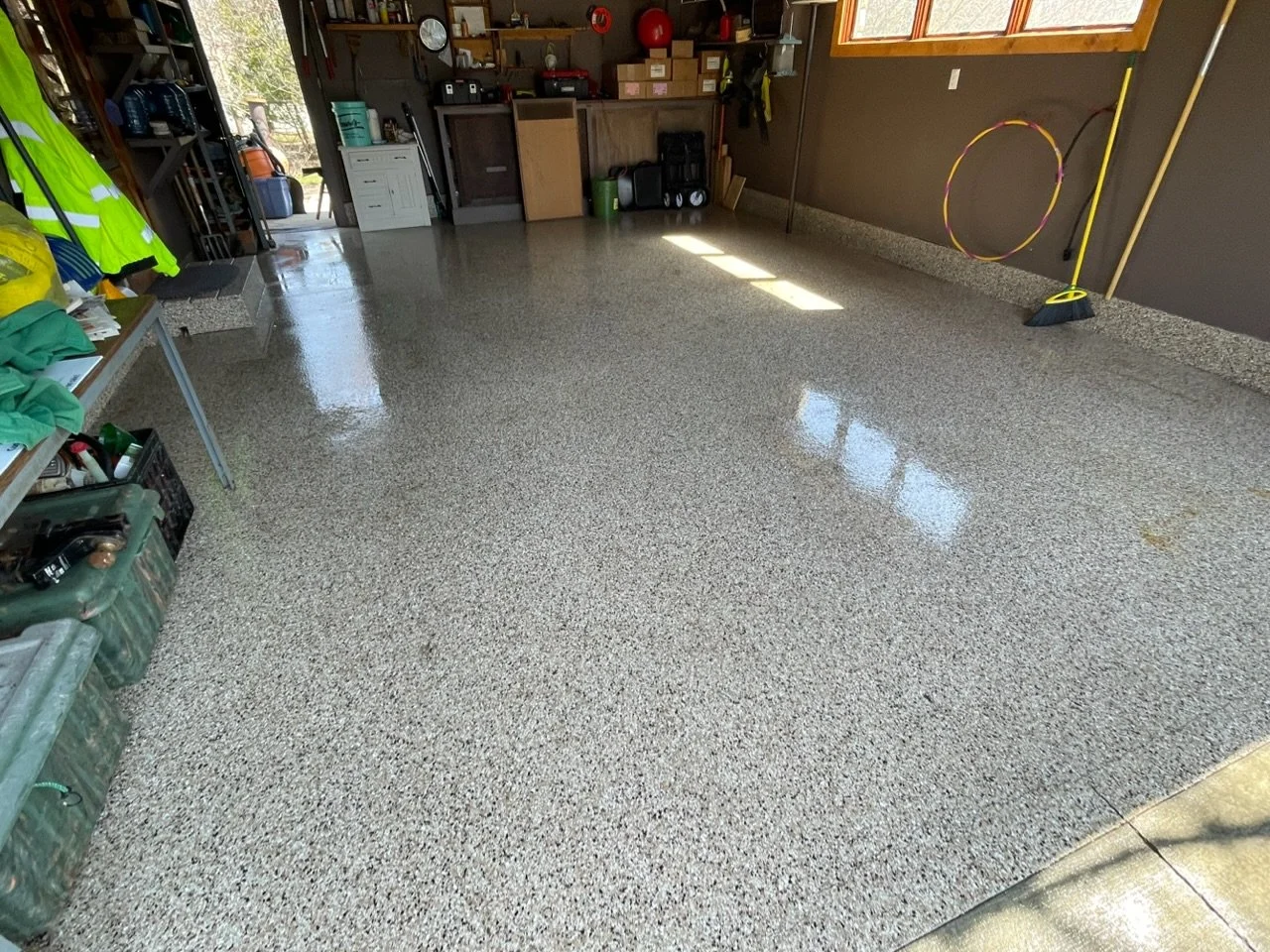
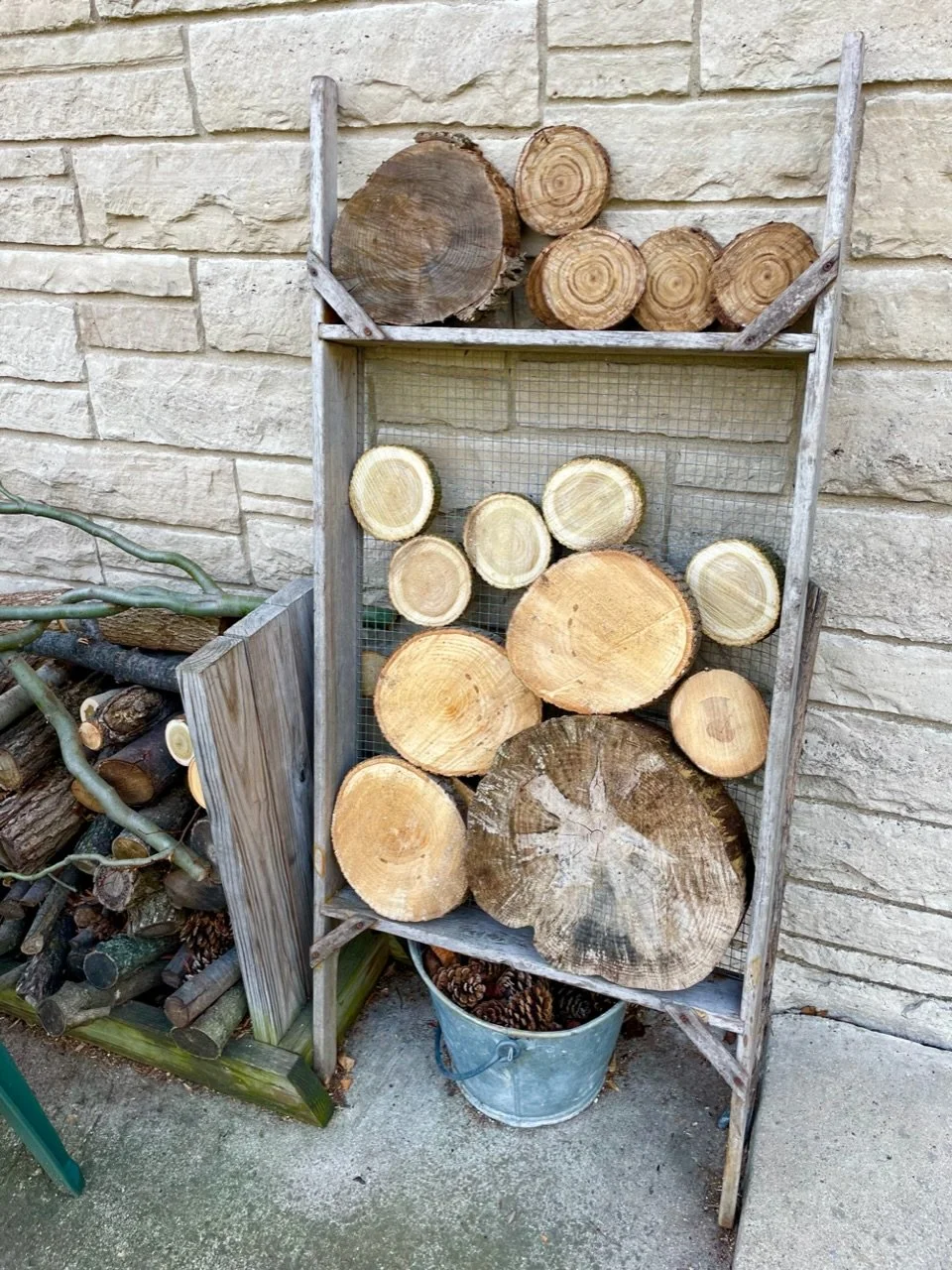
Meanwhile, the bird feeder came down, to the chagrin of a gray catbird.
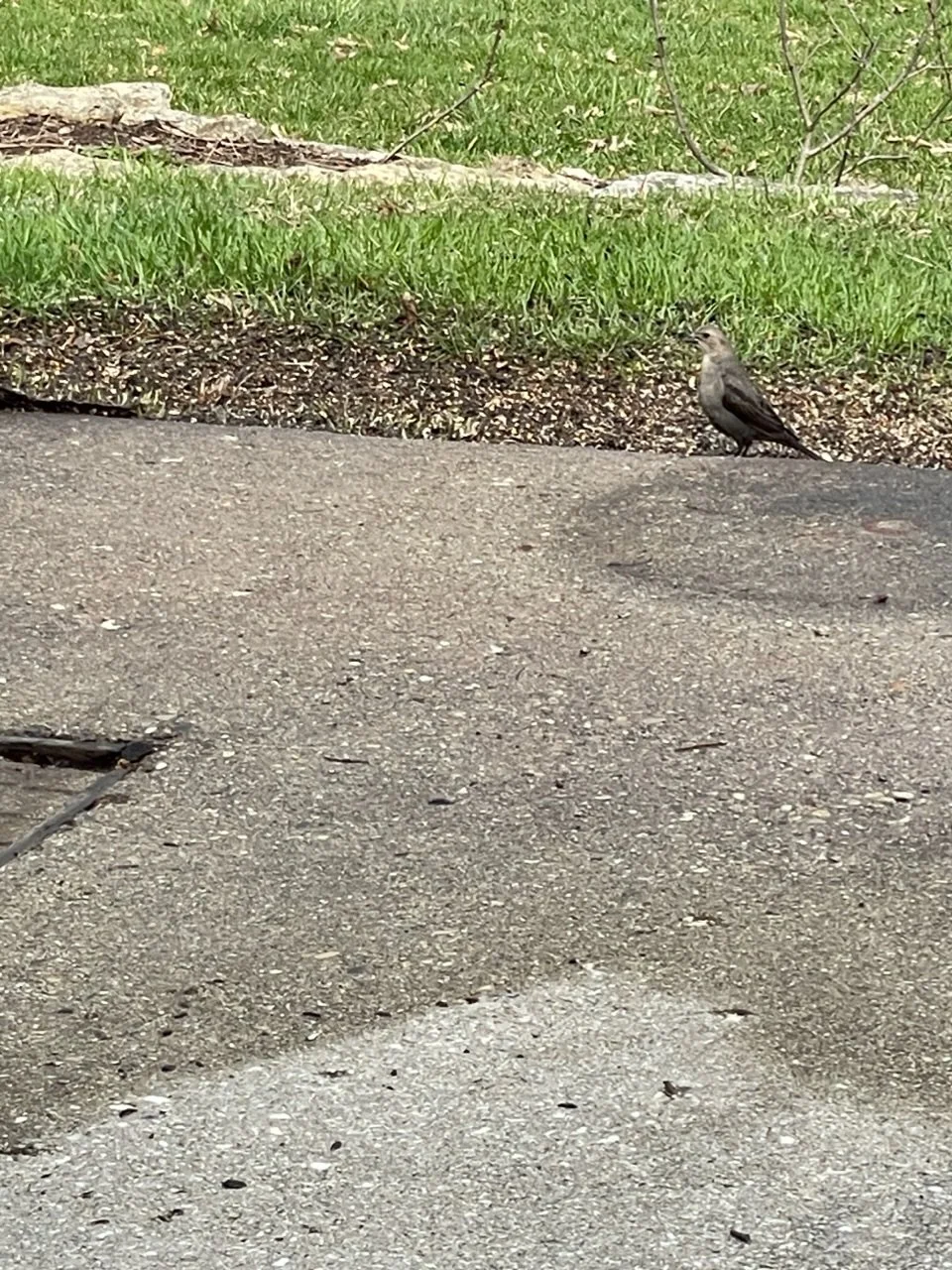
Emails, texts, people coming and going. Too busy to do much.
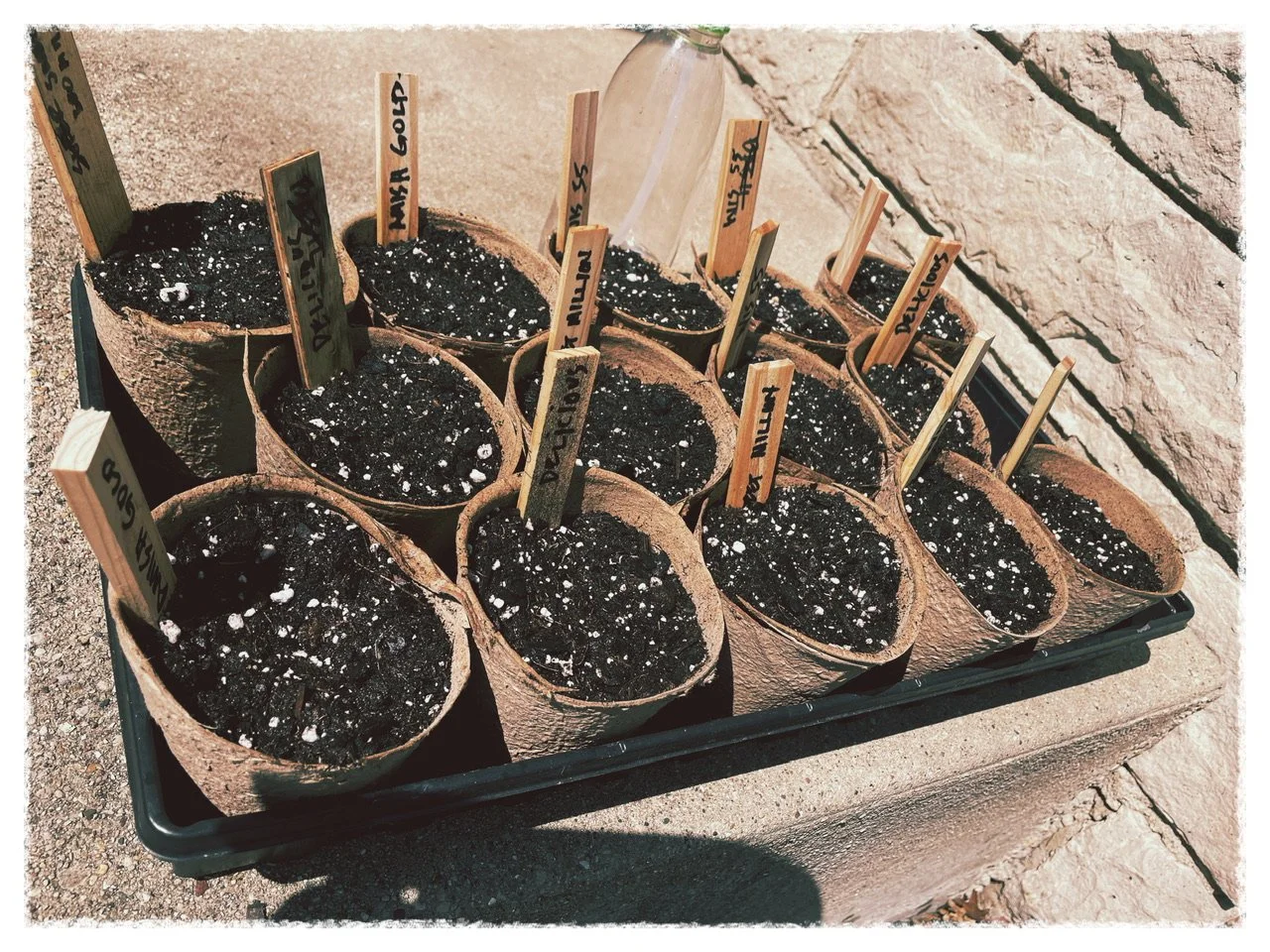
Did manage to plant some tomato seeds. And, with Nick, two white oak saplings in the Arb.
I’m no genius with genuses, but your garden is killing the Earth
Dana Milbank
Used without permission. I hope Dana doesn’t mind.
~~~~~~~~~~~~~~~~~~~~~~~~~~~~~~~~~~~~~~
I did almost everything wrong.
For 20 years, I found the latest, greatest horticultural marvels at garden centers and planted them in my yard: sunny knock-out roses, encore azaleas, merlot redbud, summer snowflake viburnum, genie magnolia, firepower nandina.
In between them flowed my lush, deep-green lawn. I hauled sod directly from the farm and rolled it out in neat rows. I core-aerated, I conditioned, I thatched, I overseeded, I fertilized. I weeded by hand, protecting each prized blade of tall fescue from crabgrass and clover.
In this season, a symphony of color performs in my yard. The fading daffodils, cherry blossoms, saucer magnolias, hyacinths and camellias meet the arriving tulips, lilacs, creeping phlox and azaleas, with the promise of rhododendrons, peonies, hydrangeas, day lilies and roses to debut in the coming weeks.
But this year, the bloom is off the rose. And the hydrangea. And the rhododendron. And all the rest. It turns out I’ve been filling my yard with a mix of ecological junk food and horticultural terrorists.
When it comes to the world’s biodiversity crisis — as many as 1 million plant and animal species face near-term extinction because of habitat loss ― I am part of the problem. I’m sorry to say that if you have a typical urban or suburban landscape, your lawn and garden are also dooming the Earth.
I came to understand the magnitude of my offenses after enlisting in nature boot camp this spring. I’m in “basic training” with the state-sponsored Virginia Master Naturalist program. While others sleep in on rainy weekend mornings, my unit, the Arlington Regional Master Naturalists, has us plebes out in the wetlands distinguishing a yellow-bellied sap sucker from a pileated woodpecker.
I’m no genius with genuses, but I know a quercus from a kalmia, and because of my gardening experience, I began the program with confidence. Instead, I’ve discovered that all the backbreaking work I’ve done in my yard over the years has produced virtually nothing of ecological value — and some things that do actual harm.
A few of the shrubs I planted were invasive and known to escape into the wild. They crowd out native plants and threaten the entire ecosystem. Our local insects, which evolved to eat native plants, starve because they can’t eat the invasive plants or don’t recognize the invaders as food. This in turn threatens our birds, amphibians, reptiles, rodents and others all the way up the food chain. Incredibly, nurseries still sell these nasties — without so much as a warning label.
He took aim at my day lilies: “I would remove them all. Those have also become badly invasive.”
He spied my creeping jenny on a slope: “Another nasty invasive.”
He condemned to death my rose of Sharon shrubs (natural areas “have really been torn up by these guys”) and my innocuously named summer snowflake viburnum.
Worst was my row of nandinas — “heavenly bamboo” — along the foundation. “You definitely want to remove it,” he advised. Its cyanide-laced berries poison birds.
Bright did praise two “good” species I have that contribute to biodiversity: a sycamore and a catalpa as well as a “great” American elm and a “phenomenal” dogwood. (I couldn’t take much pride in them, though, because all four were here long before I arrived.) And Bright assured me I wasn’t a particularly egregious offender; my one-sixth acre lot in town is typical of the urban/suburban landscape.
Most of my other plants, including my beloved lawn, are ecological junk food. The trees, shrubs and perennials are mostly “naturalized” plants from Asia or Europe or “cultivars,” human-made varieties of native plants bred to be extra showy or disease resistant but lacking genetic diversity or value to animals. I, like other gardeners I know, planted them after mistaking them for their native cousins. They’re not doing harm, but neither are they doing anything to arrest the spiral toward mass extinction.
To get a sense of my missteps, I asked Matt Bright, who runs the nonprofit Earth Sangha, a native-plant nursery in Fairfax County (and a lecturer on botany for my nature boot camp) to walk through my yard with me.
But that’s just the problem. “Forty percent of the world’s plants are at risk of extinction, and we know that’s being driven by climate change and habitat loss,” said Jennifer Bernstein, chief executive of the New York Botanical Garden. The United Nations estimates that 1 in 8 species on the planet are threatened with extinction, many within decades. Lose our plants and we lose our animals — including people.
Here in the United States, urban sprawl is worsening both of the interrelated crises of climate change and habitat loss. Turf now covers some 50 million acres (the country’s largest and least useful irrigated crop), concentrated in suburban areas. These lawns suck up water and they don’t sequester as much carbon as forests and prairies.
Lawns, and those useless, ubiquitous cultivars of trees, shrubs and perennials sold by the major garden centers, are squelching the genetic variety nature needs to adapt to climate change. The resulting loss of native plants in our fragmented urban and suburban landscapes deprives both plants and wildlife of the contiguous habitats they need to breed and, over time, to migrate in response to climate change.
The deck is stacked against nature in this fight.
Demand for native plants outstrips supply. A native plant sale last month at the National Arboretum, for example, was scheduled to run for six hours, but the place had been cleaned out after just three.
Most people buy their lawn plants from Home Depot, Lowe’s, Walmart, Costco and the like, which either don’t offer native plants or offer those useless, engineered cultivars masquerading as natives. I had thought the magnolias, azaleas, hydrangeas and viburnums I bought were natives (there are native varieties of all these) but they turned out to be either the engineered types or even Asian varieties.
In some places, growing natives can get you in trouble with your neighbors — or the law. Arlington County still has an ordinance on the books requiring people to keep plants on their “grass or lawn area” no higher than 12 inches — essentially making native gardens illegal. Caroline Haynes, chair of the county’s Natural Resources Joint Advisory Group, told me several scofflaws have been fined for growing native plants. Some homeowners’ associations have similar rules.
But there is some good news. Despite the daunting obstacles, it doesn’t have to be that hard to do the Earth some good. In fact, it’s as simple as this: If you want to save the planet, all you really need to do is plant a single oak tree.
“You can plant one tree. You don’t have to get rid of anything else,” said entomologist and author Doug Tallamy, godfather of the native-plant movement. “Plant a tree, put a bed under that tree, and all of a sudden you’ve got less lawn. If you make it a good tree, you’ve got a powerful addition to your yard. And if that’s the only thing you do in a year, you’ve still made an important contribution.”
A seedling of a white oak or a northern red oak (the two most ecologically valuable species) will cost you $20 at Earth Sangha, or $15 if you buy a $35-a-yearmembership. Other native-plant growers in the D.C. area can be found here, here and here. You can even buy white oaks on Amazon, if you must.
You’ll need to protect the tree from deer if they’re in your neighborhood and you don’t have a fenced yard. Don’t have a yard? You can plant a native viburnum, goldenrods, asters, sunflowers and pussy willows in containers on a balcony or patio.
If possible, you should remove the nastiest of the invasive plants if you have them: burning bush, Japanese barberry, Asian bush honeysuckle, English ivy, callery (Bradford) pear and a few others.
But leave the rest of your plants alone, for now. Tallamy ultimately wants to cut lawn acreage in half, but “there is room for compromise,” he said. Think of your noninvasive plants and cultivars as “decorations.”
Janet Davis, who runs Hill House Farm & Nursery in Castleton, Va., has a similar message for the purists who make you feel bad about your blue hydrangea. “Don’t give me crap about something that’s not native but not invasive,” she said. “I’m never going to tell you you can’t have your grandmother’s peony.”
Thus absolved, I shed my guilt about my yard full of ecological empty calories. I kept my hydrangeas, azaleas and roses but pulled out the truly bad stuff. I dug up the nandinas and replaced them with native winterberry holly, red chokeberry and maple-leaf viburnum. I removed the rose of Sharon and substituted American hazelnut and witch hazel. I uprooted the invasive viburnum and planted a native arrowwood viburnum in its place.
I also took a small step in the painful task of killing my beloved lawn. I used landscape fabric to smother about 400 square feet of turf. In its place, I planted a smattering of canopy trees (two white and two northern red oaks), understory trees (ironwood, eastern redbud), shrubs (wild hydrangea, black haw viburnum) and various perennials and grasses (Virginia wild rye, blue-stemmed goldenrod, American alumroot, woodrush, spreading sedge).
My 38 plants cost $439 at Earth Sangha. But these natives, adapted to our soil and conditions, don’t require fertilizer, soil amendments or, eventually, much watering. Over time, I’ll save money on mulch and mowing.
Right now, my seedlings look pretty sad. Where once there were healthy lawn and vibrant shrubs, there is now mud and scrawny sprigs poking from the ground every few feet. I put up chicken wire to keep the kids (and me) from trampling them. The carcasses of my invasive plants lie in a heap on the gravel.
But in a couple of seasons, if all goes well, my yard will be full of pollinators, birds and other visitors in need of an urban oasis. Years from now, those tender oak seedlings, now 6-inch twigs, will stretch as high as 100 feet, feeding and sheltering generations of wild animals struggling to survive climate change and habitat loss.
I won’t be alive to see it. Yet even now, my infant oaks give me something the most stunning cherry blossom never could: a sense of hope.
…or something like that. Bright and greening up today , but jacket still needed.
Still, a little yard work, and some fiddling with the chainsaw—sharpening and then cutting tree cookies for upcoming Arboretum school field trip. (Hoping the trees will have leaves by Arbor Day)
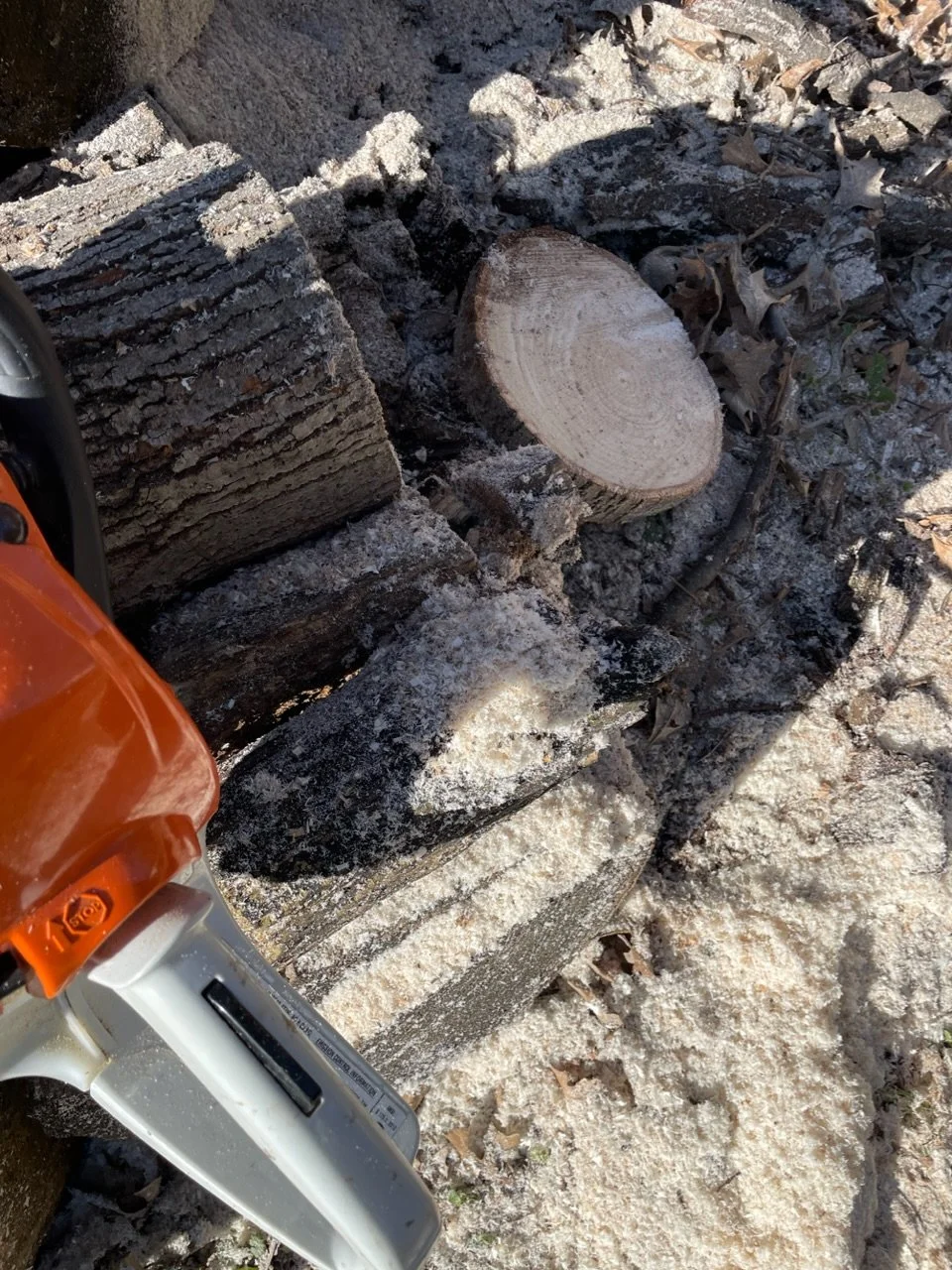
Another storm early this morning, followed by lots of wind and slowly dropping temps. The cornfields look to be swimmable.
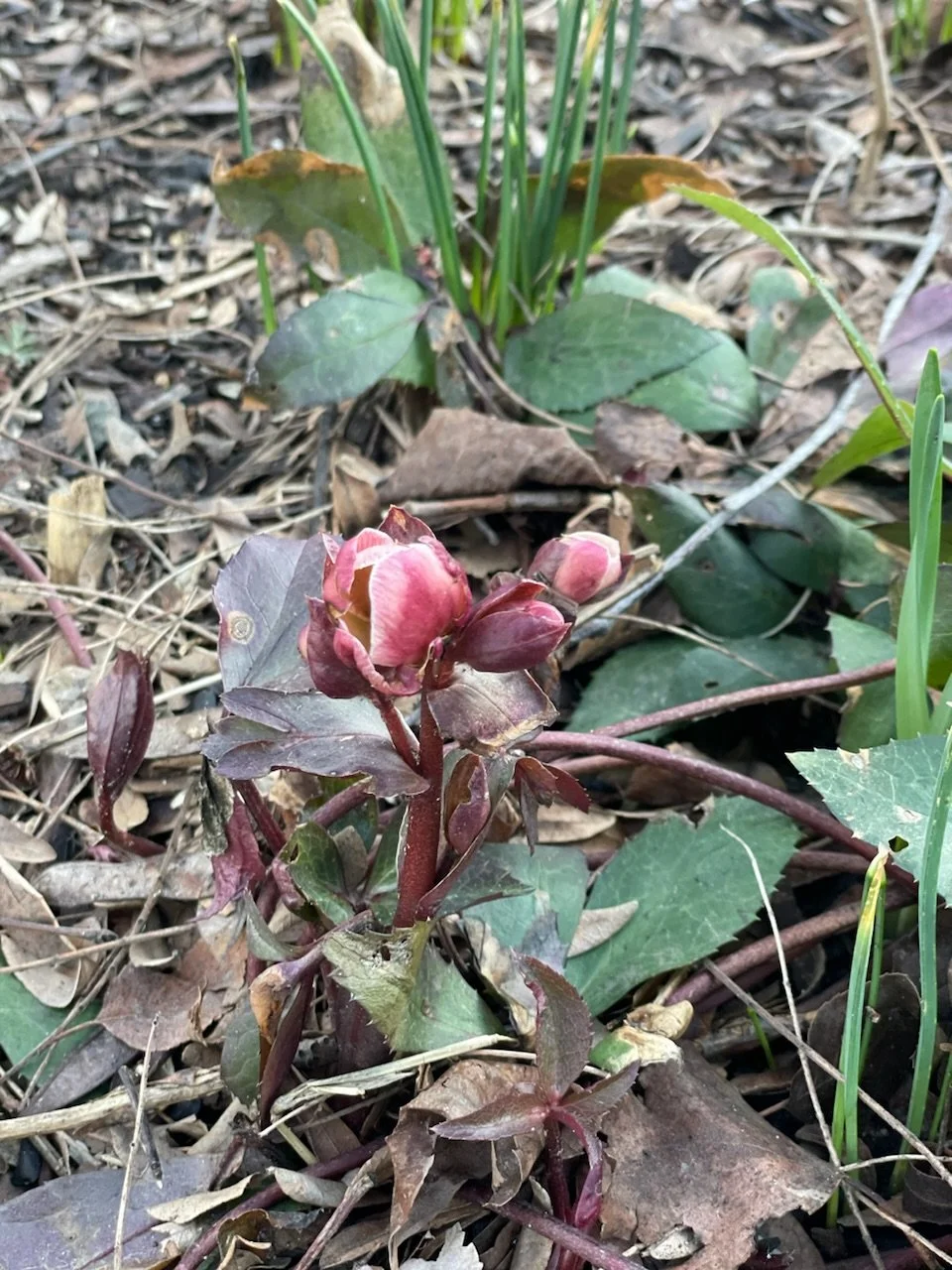
Games so exciting I forgot to take photos.

And on the election front, a very important win.
Here are some counties where voters know what they are doing:
Menominee, Dane, Milwaukee, Rock, La Cross, Eau Claire, Douglas, Iowa, Bayfield, Ashland.
Definitely want to avoid Florence and Taylor counties, and feel sorry for the people living there.
Anyway, we can hope for the best now that we will have a reasonable, law-abiding, supreme court.
More rain mixed with a little thunder, but no big storms.
…and a little thunder, too.
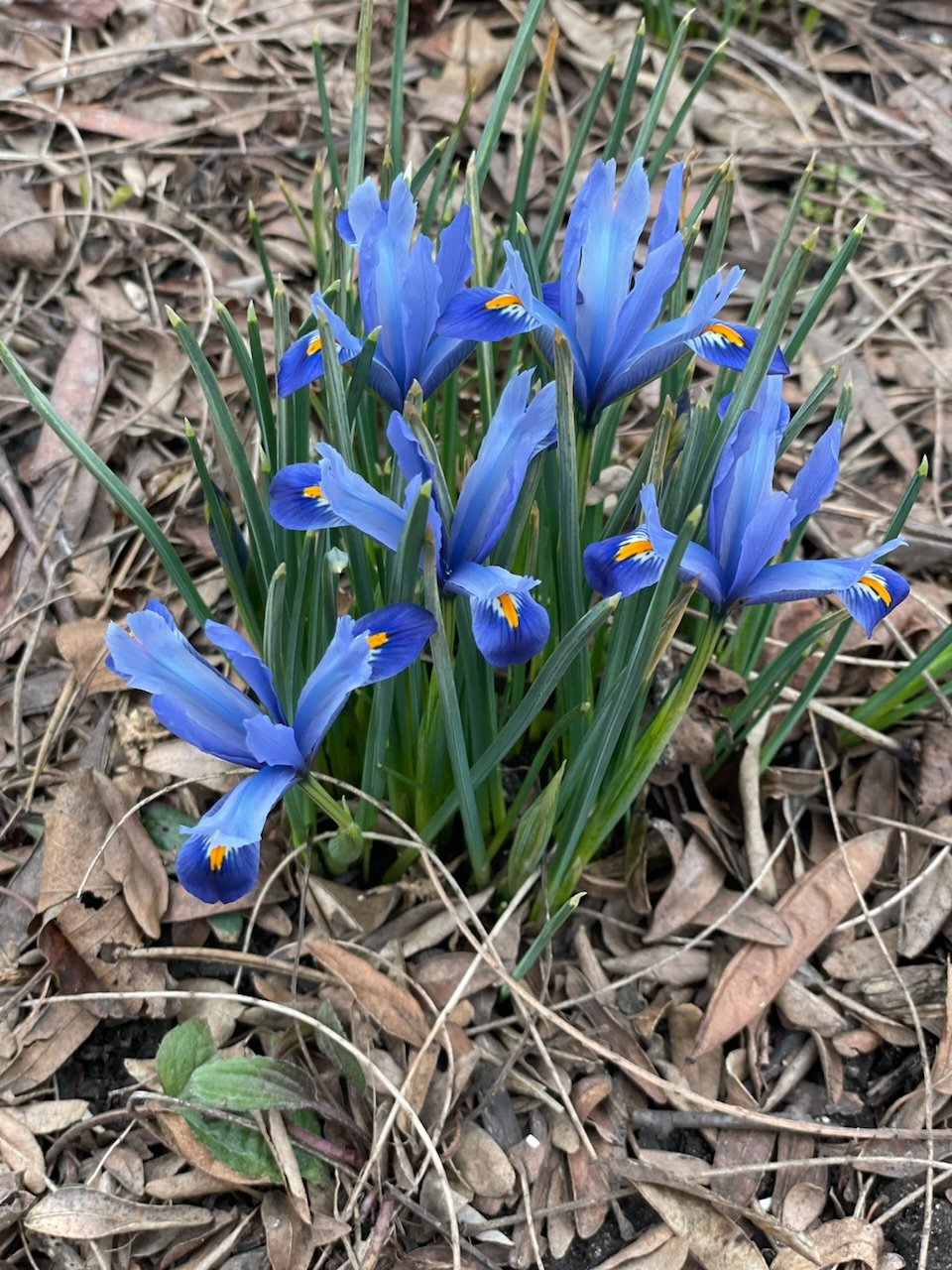
All very nice.
Tomorrow…perhaps the most important election in the history of time. We plan to vote early.
Here’s a clip from NYT:
Wisconsin is a microcosm of the country. It is narrowly divided politically, though Democrats have a slight advantage in the popular vote in statewide elections. And, as in Washington, Republicans have structural advantages in the government that give them outsize power.
Conservatives have controlled the state’s Supreme Court since 2008, and Republicans have held a hammerlock on the Legislature since 2011, when the party drew itself an impenetrable majority after taking control in a wave election.
Tomorrow, Wisconsin will hold an election for a seat on its Supreme Court, and it is no exaggeration to call the race, for a 10-year term, the single most important American election of 2023. It is already the most expensive judicial race in the nation’s history. The candidates and the super PACs supporting them have spent nearly three times as much on this race as in any prior court election.
Why is a single state race crucial? Because whichever side prevails will hold a 4-to-3 court majority, and this is the first American election in which the winner will single-handedly determine two big issues: the fate of abortion rights and whether the state has a functional representative democracy. The winner will also set the course for the 2024 presidential election in a state where fewer than 23,000 votes decided four of the last six such races.
If the liberal candidate, Janet Protasiewicz, wins, Wisconsin will almost certainly become the first state to allow abortion again after outlawing it with last summer’s ruling overturning Roe v. Wade. And because Democrats are likely to challenge the makeup of the state’s legislative districts if the court has a liberal majority, the near supermajorities that Republicans enjoy in the State Legislature would also probably not survive until the 2024 election.
A victory for the conservative candidate, Daniel Kelly, would mean abortion remains illegal, the gerrymandered maps stay in place, and Wisconsin remains a dysfunctional democracy for the foreseeable future.
…slowly, and with difficulty. Hard frost at sunrise. Powerful wind; from the south, but still cold. High clouds overpowering the sun’s attempt at warmup. But by 5 p.m. clouds gone, wind softer and warmer, and spring peepers out peeping.
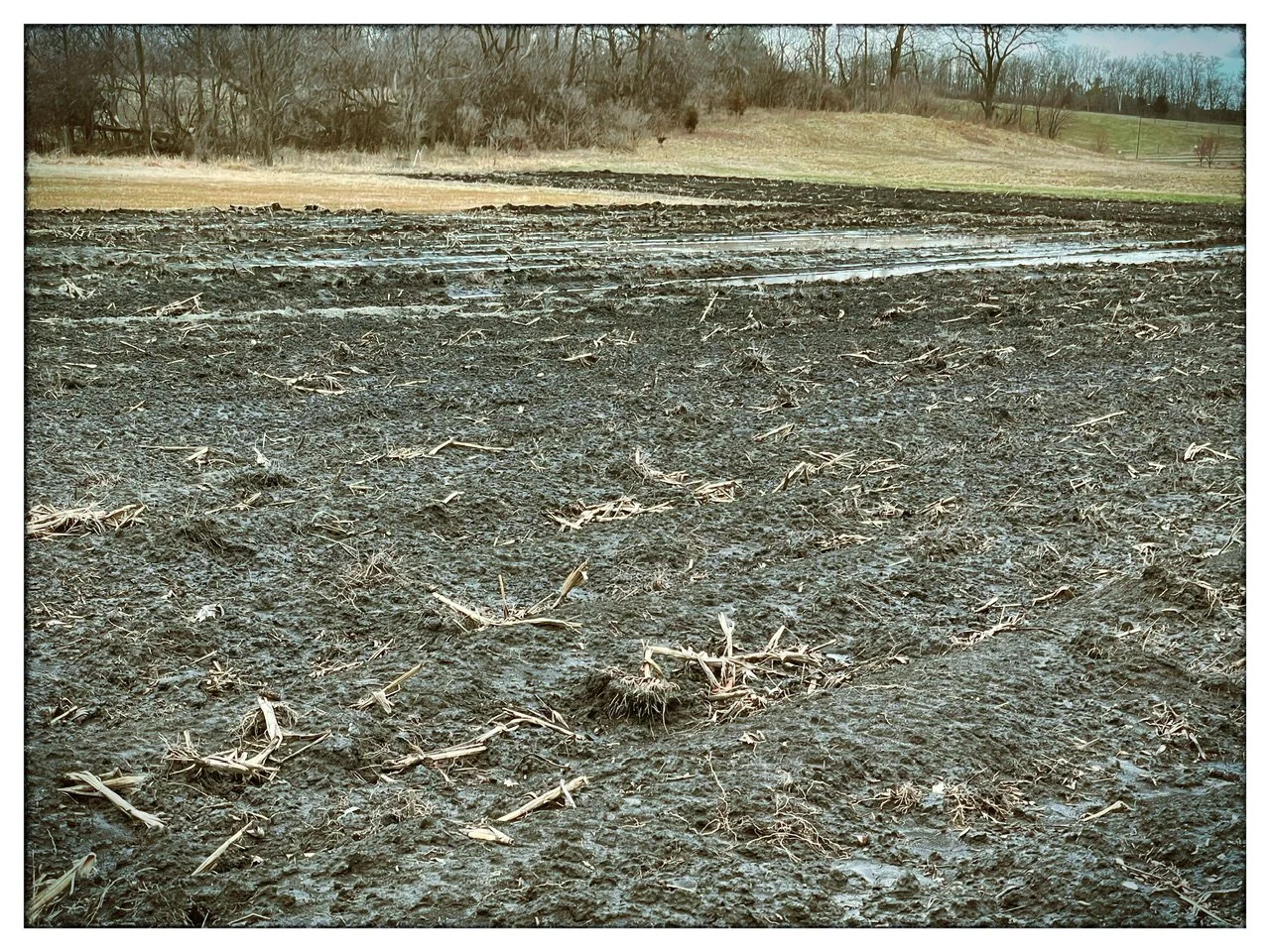
Just about right for a tootle around town.
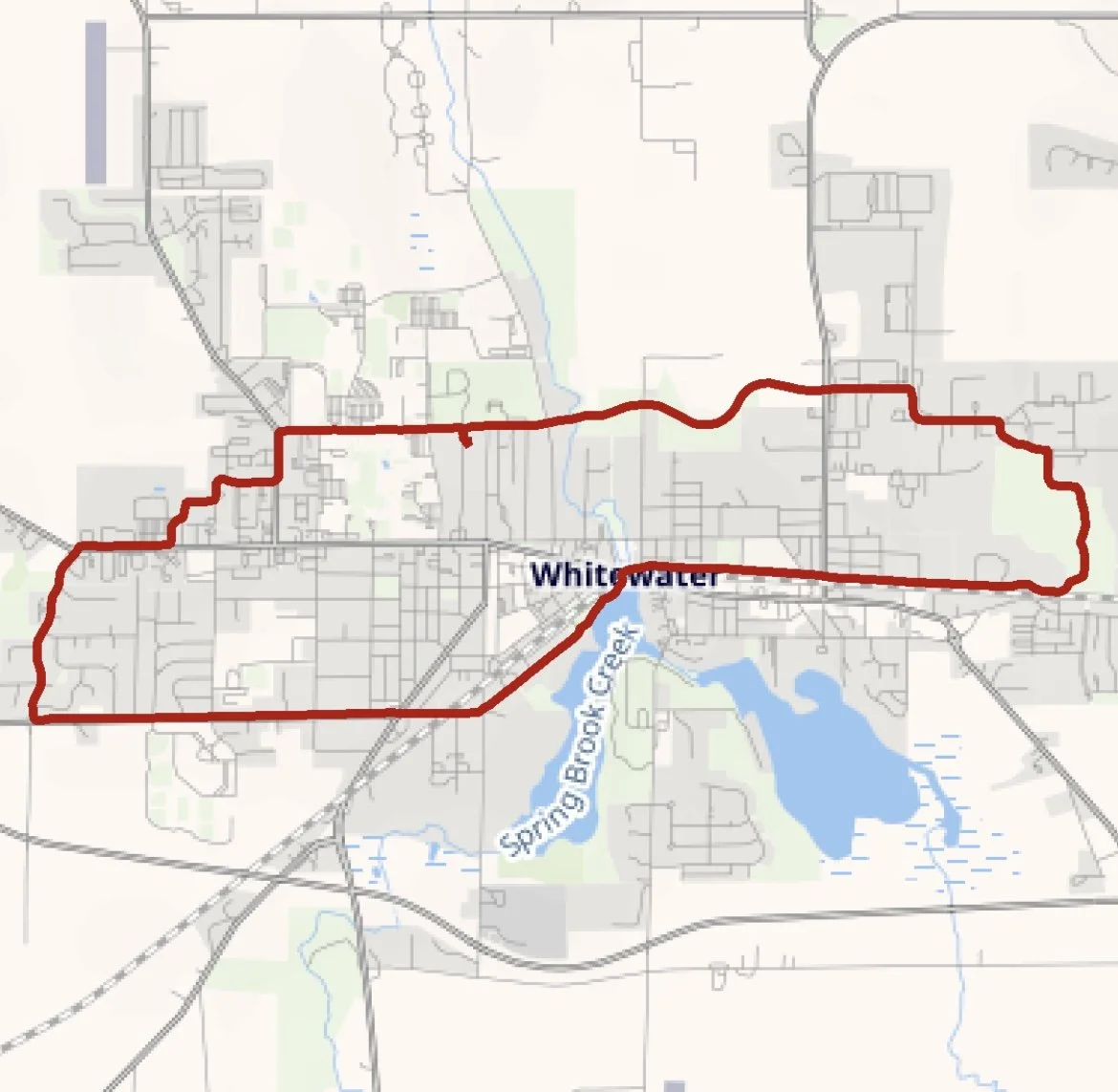
The little blob is the start point, and the finish point. Twelve point seven kilometers, all told.
Near tornado last night, snow this morning, back to spring tomorrow. And up north…16 or so inches of the white stuff. All this moisture could be good for water levels.
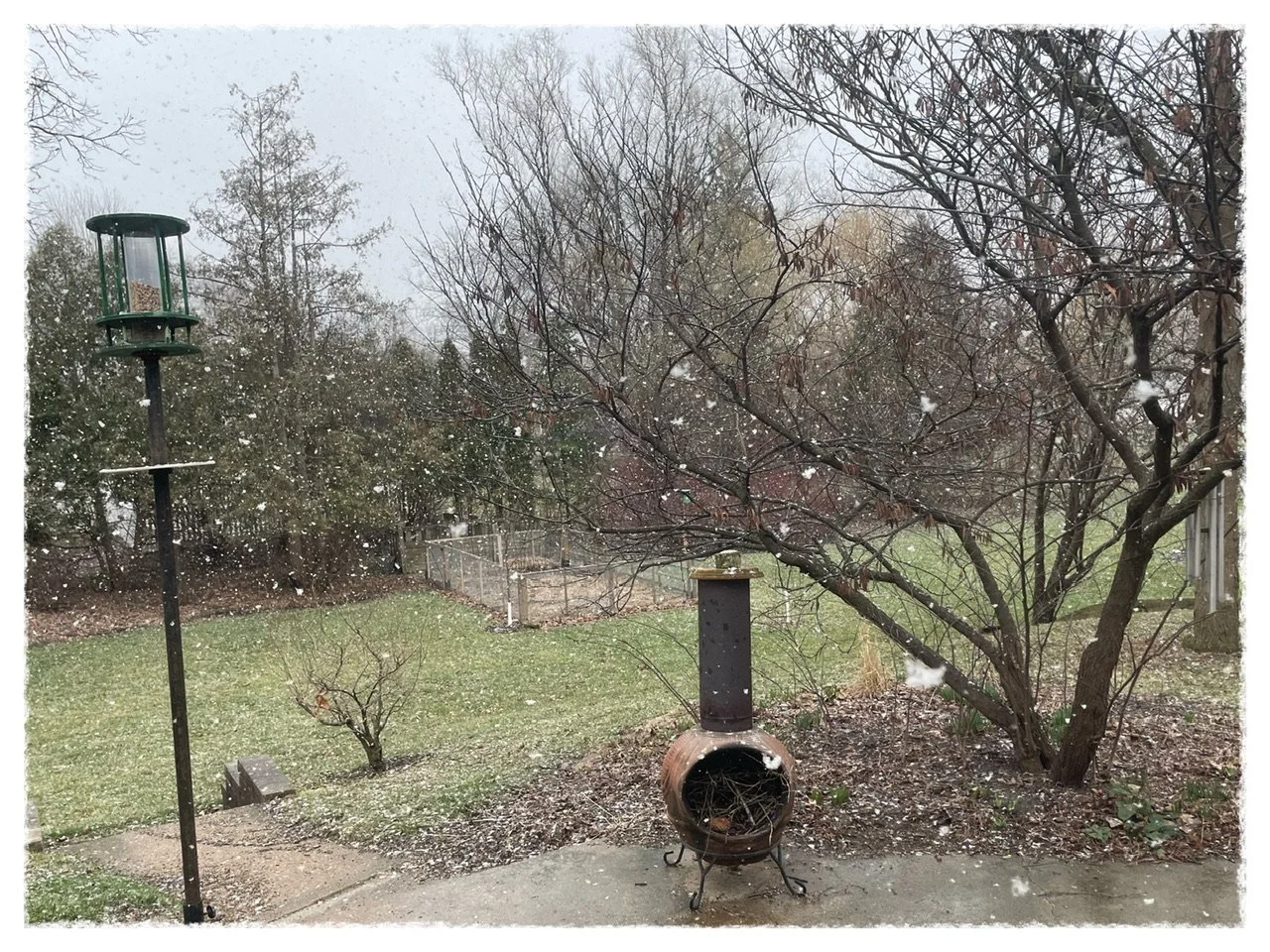
Now for some basketball.
…than New Mexico. High near 70. Little thunderstorm last night, light rain now, more storms likely.
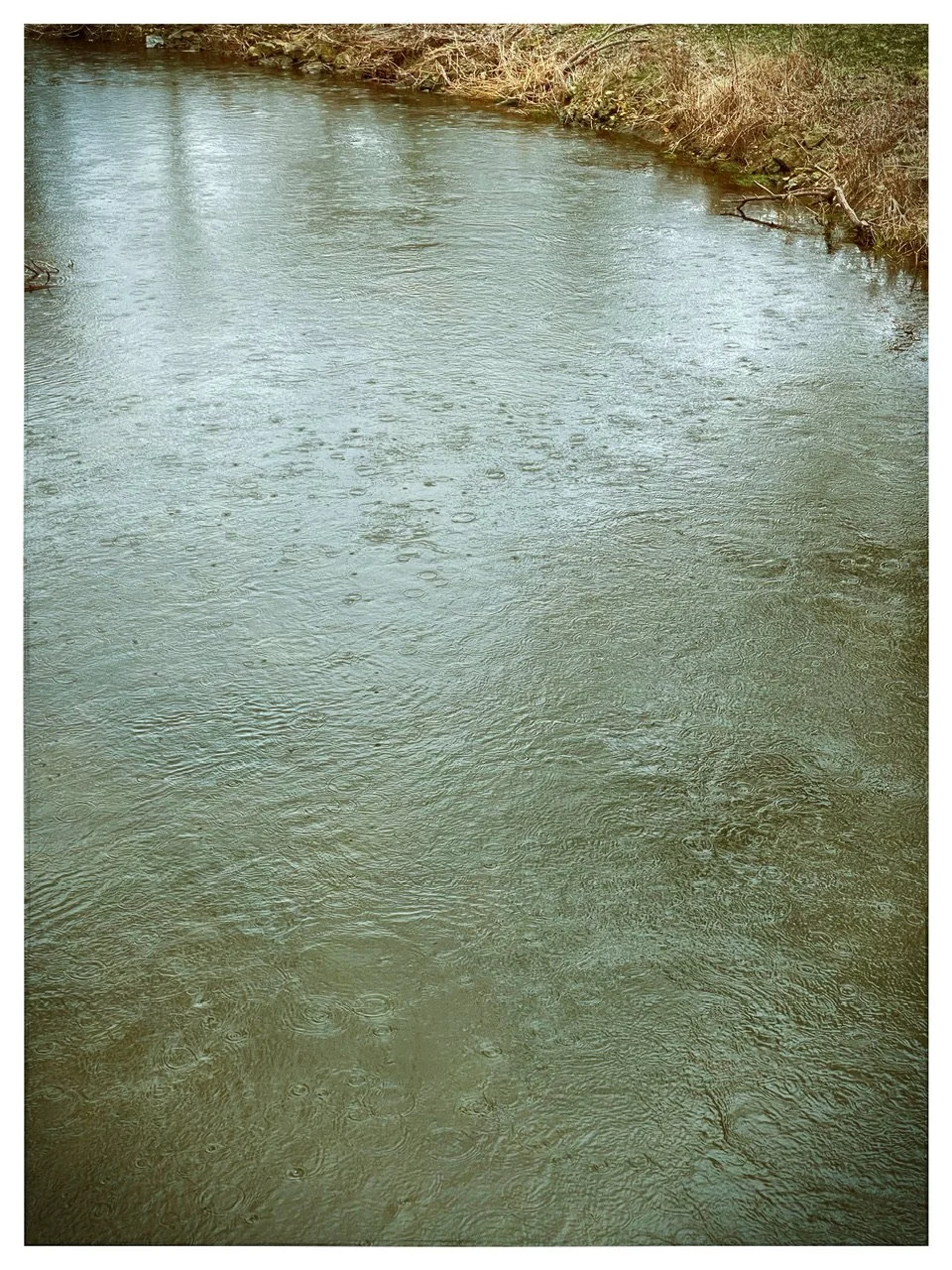
Update—strong thunderstorm just now, with tornado warning and siren. Out of an “abundance of caution,” or perhaps an over abundance, we spent half an hour in the basement.
…back in pocket, where it, or one of its predecessors, has been for many a decade. Having to leave it behind is one of the drawbacks of flying, and I feel undressed without it.
Today’s flight uneventful. It took longer to get from our hotel (near the airport) to our seats in the plane than it did for the plane to travel from Denver to Milwaukee.
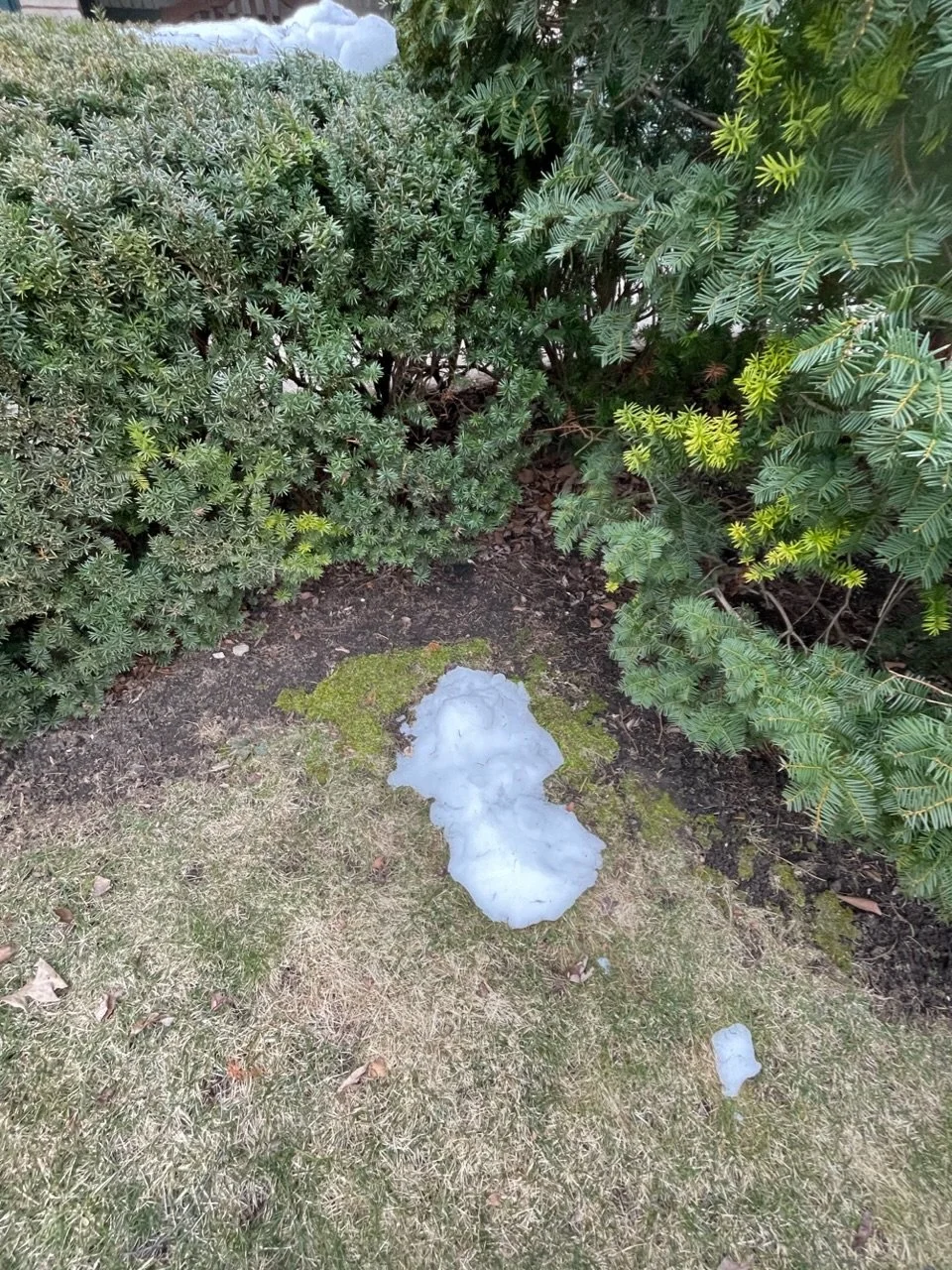
Spring has not advanced noticeably in our week’s absence.
Long drive north from Taos, on alternate route through the high, inter-mountain plain (alto plano) west of the Sangre de Cristos—a fascinating part of the world. Sometimes over 10,000 feet with towering mountains on every side. Crossed the headwaters of Rio Grande and Arkansas and Platte rivers.
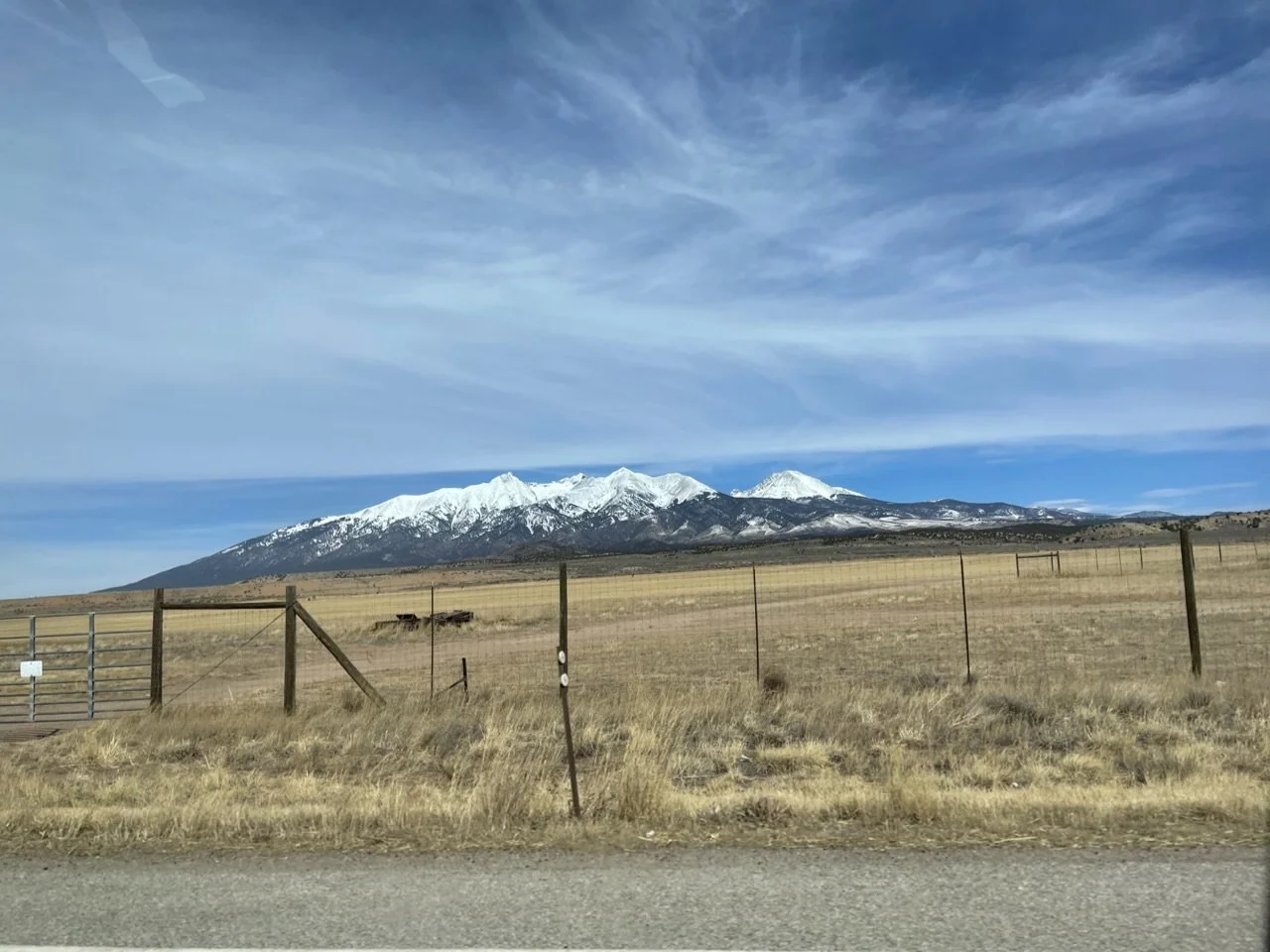
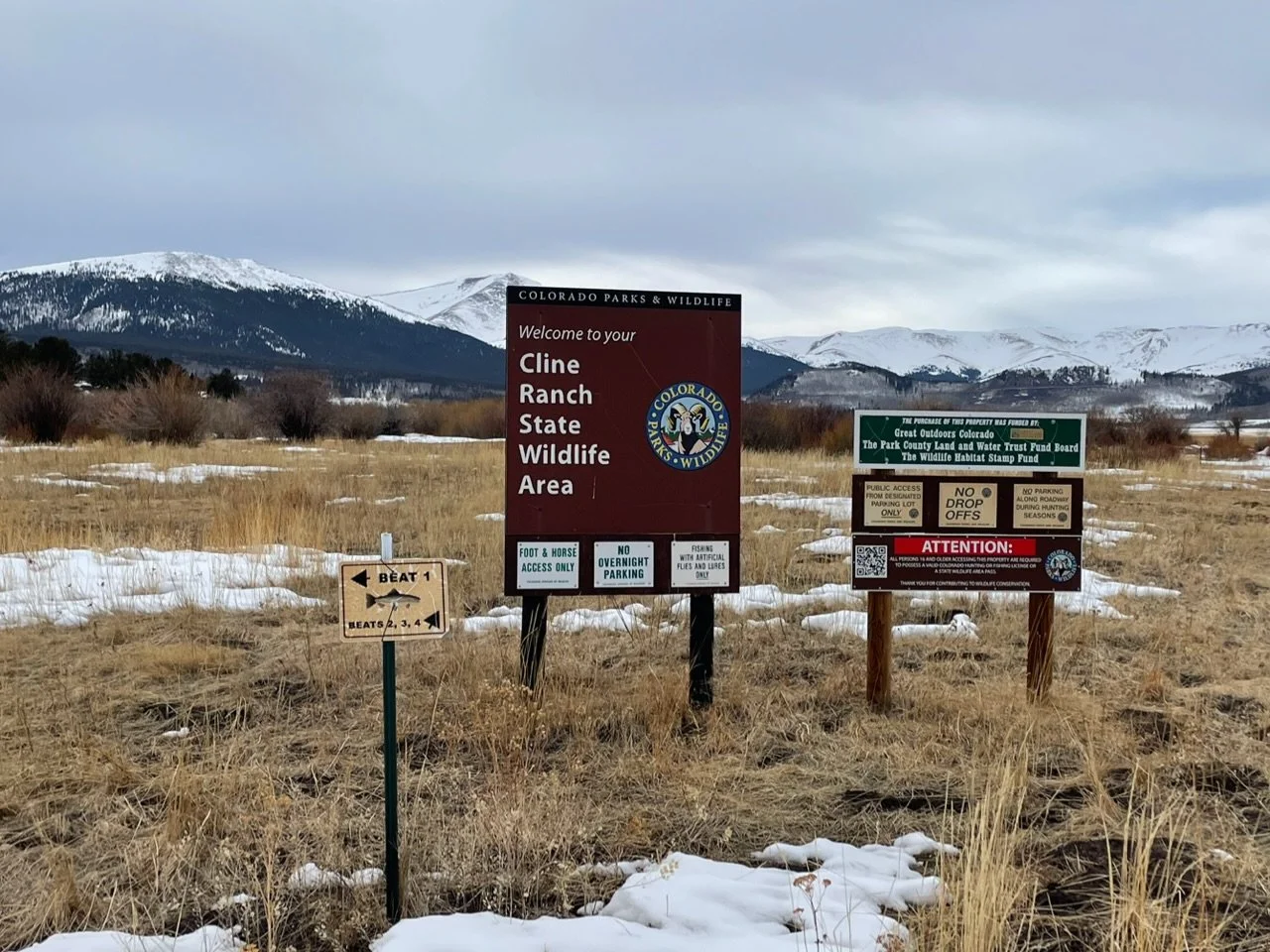

…through the Sange de Cristo mountains, up high, but, searching the valleys (where water is found) for ancient native Pueblo sites, and slightly more recent Spanish colonial remnants.
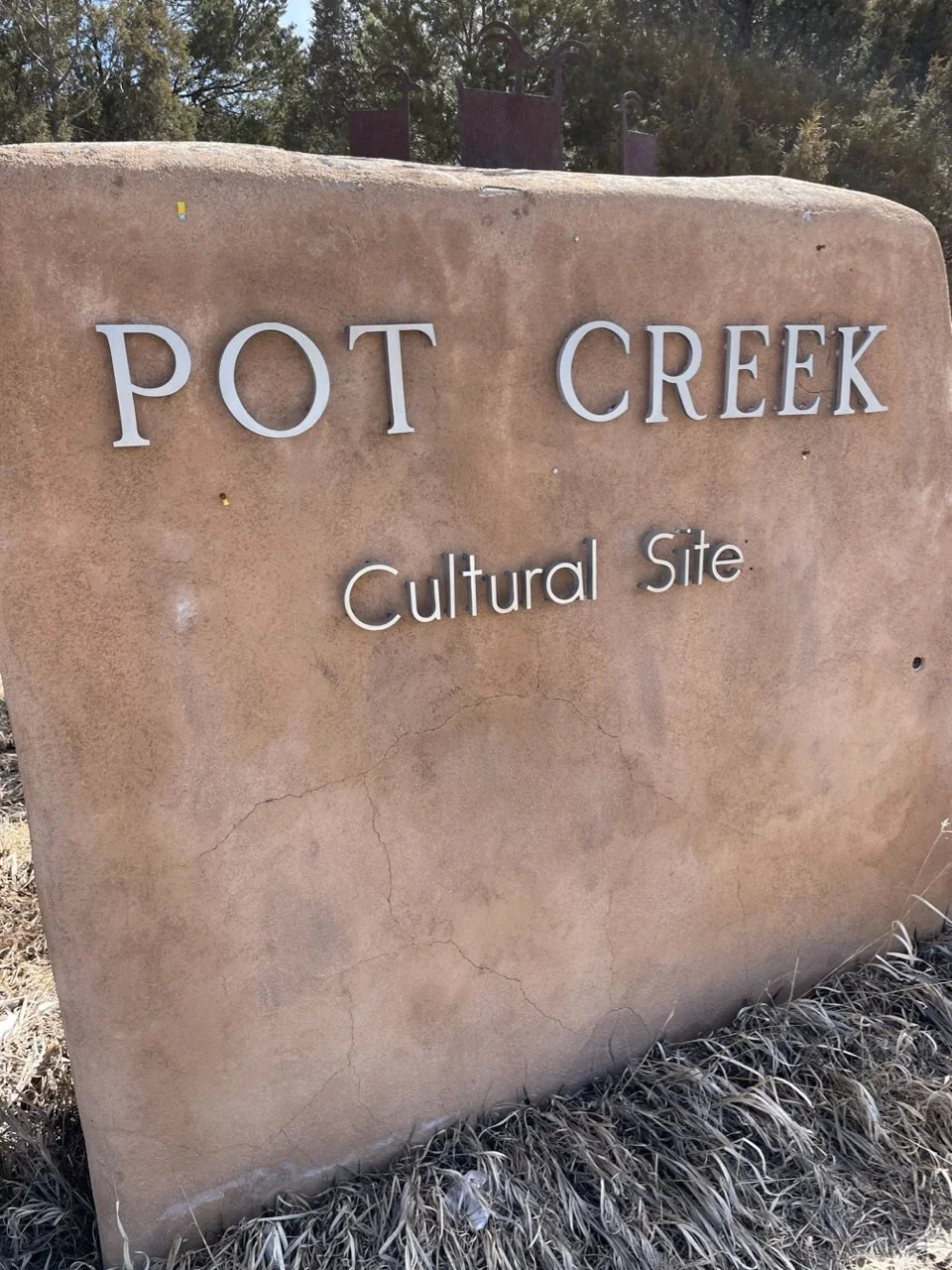

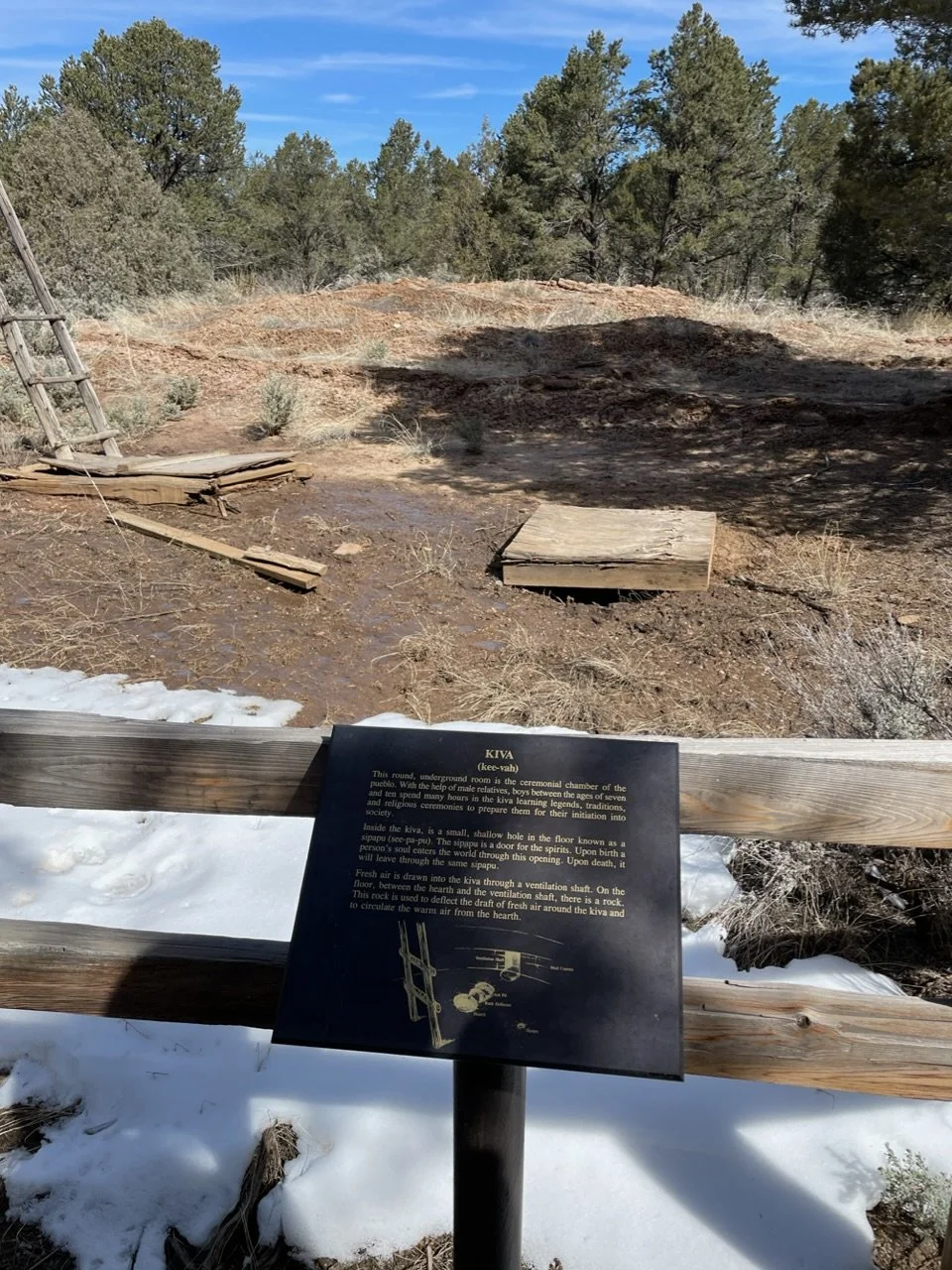

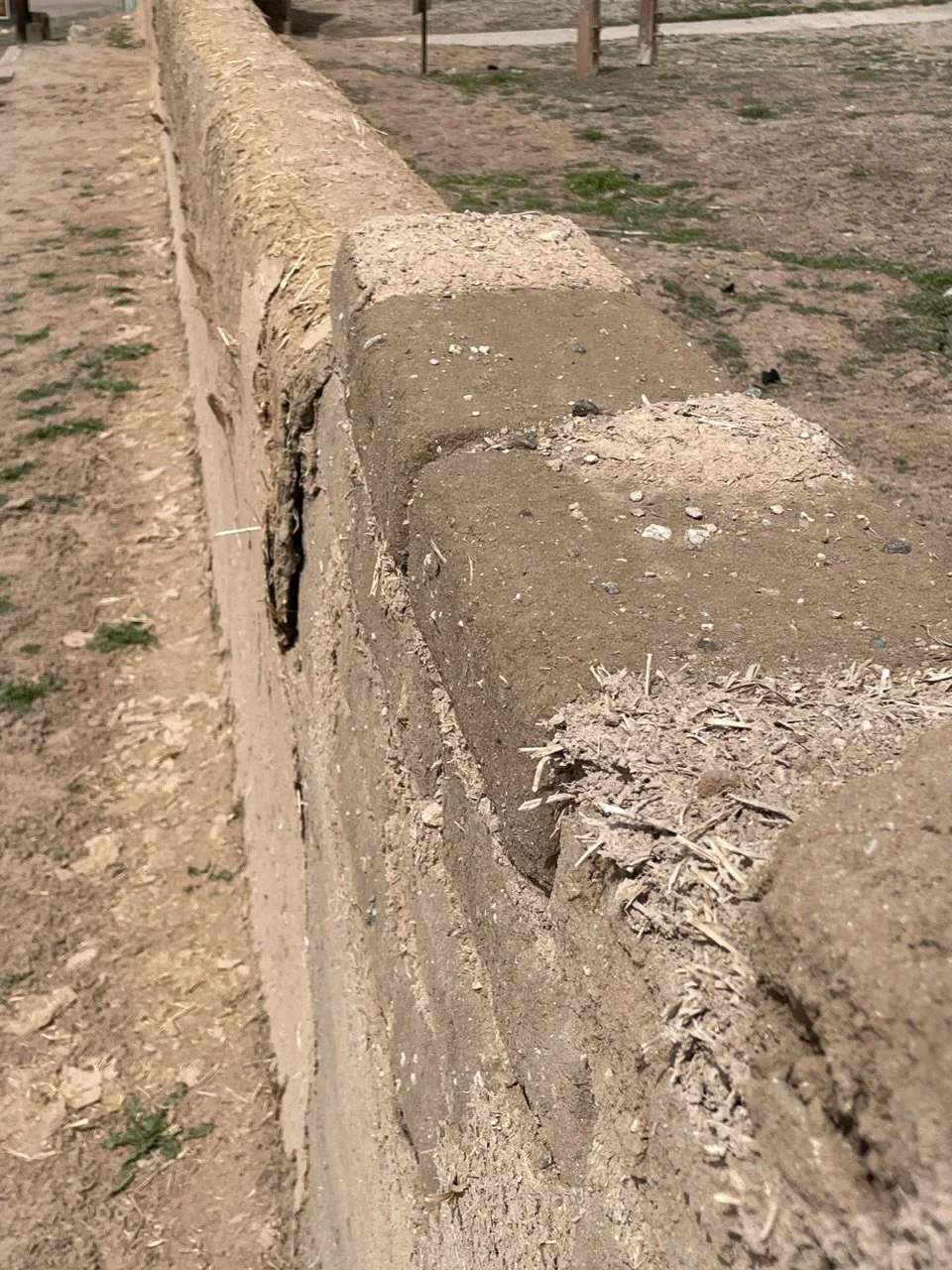



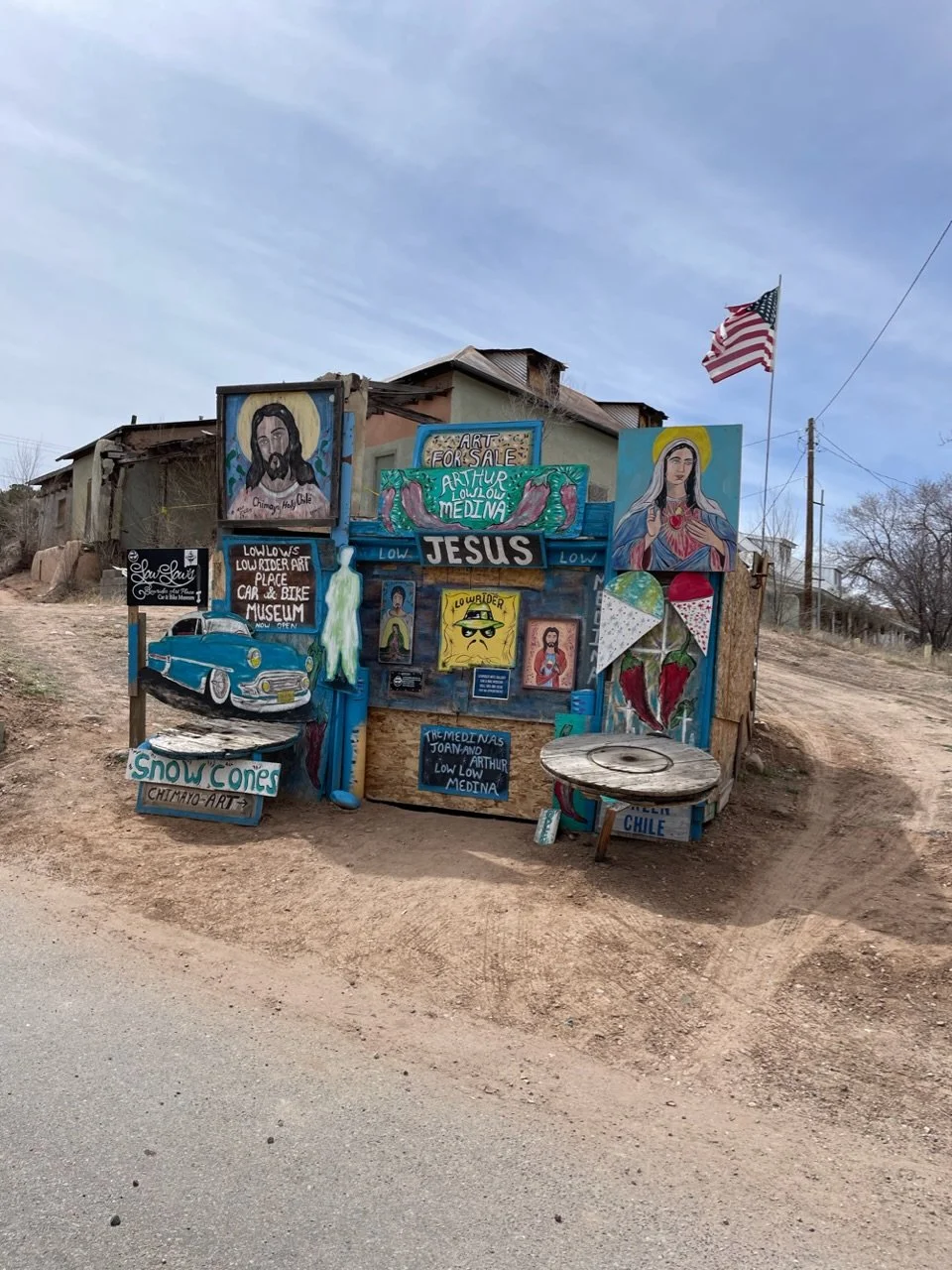
And then happy hour (with incredible food and cocktails) at a great restaurant in El Prado.


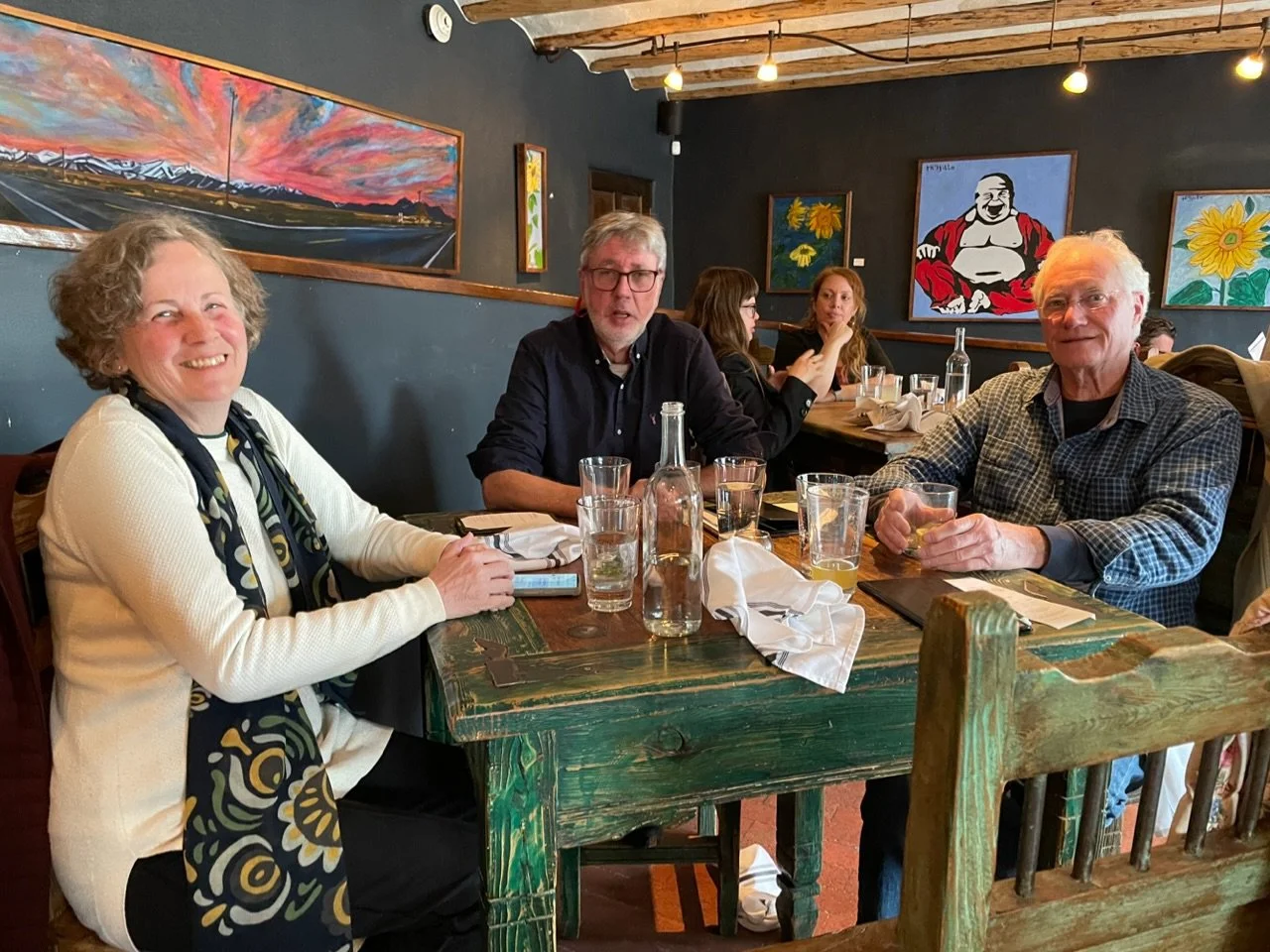
…where the wind is windy and the cold is cold. Not exactly what I was expecting in the southwest. Taos Ski Resort up, and, lower down, Arroyo Seco.

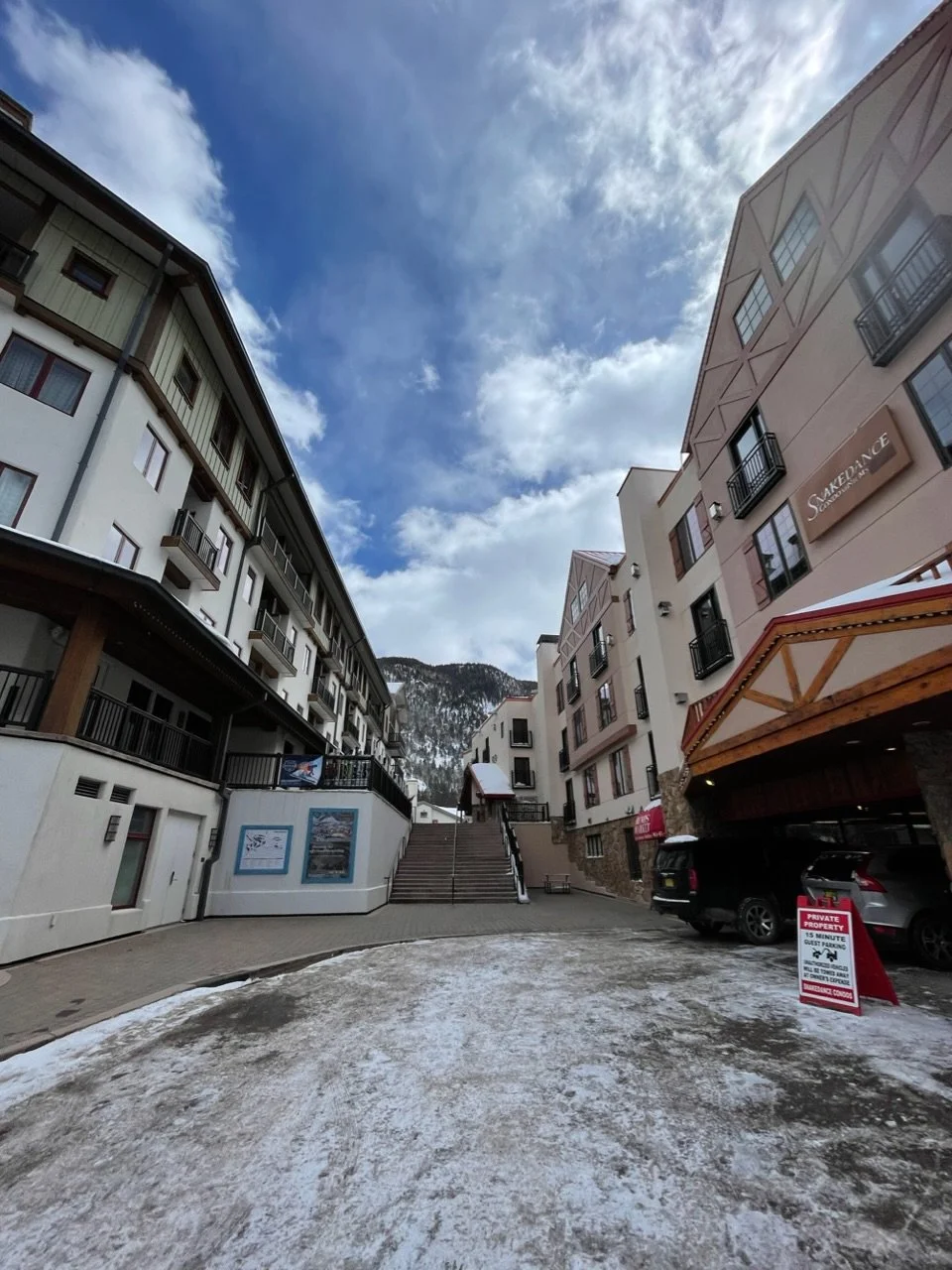
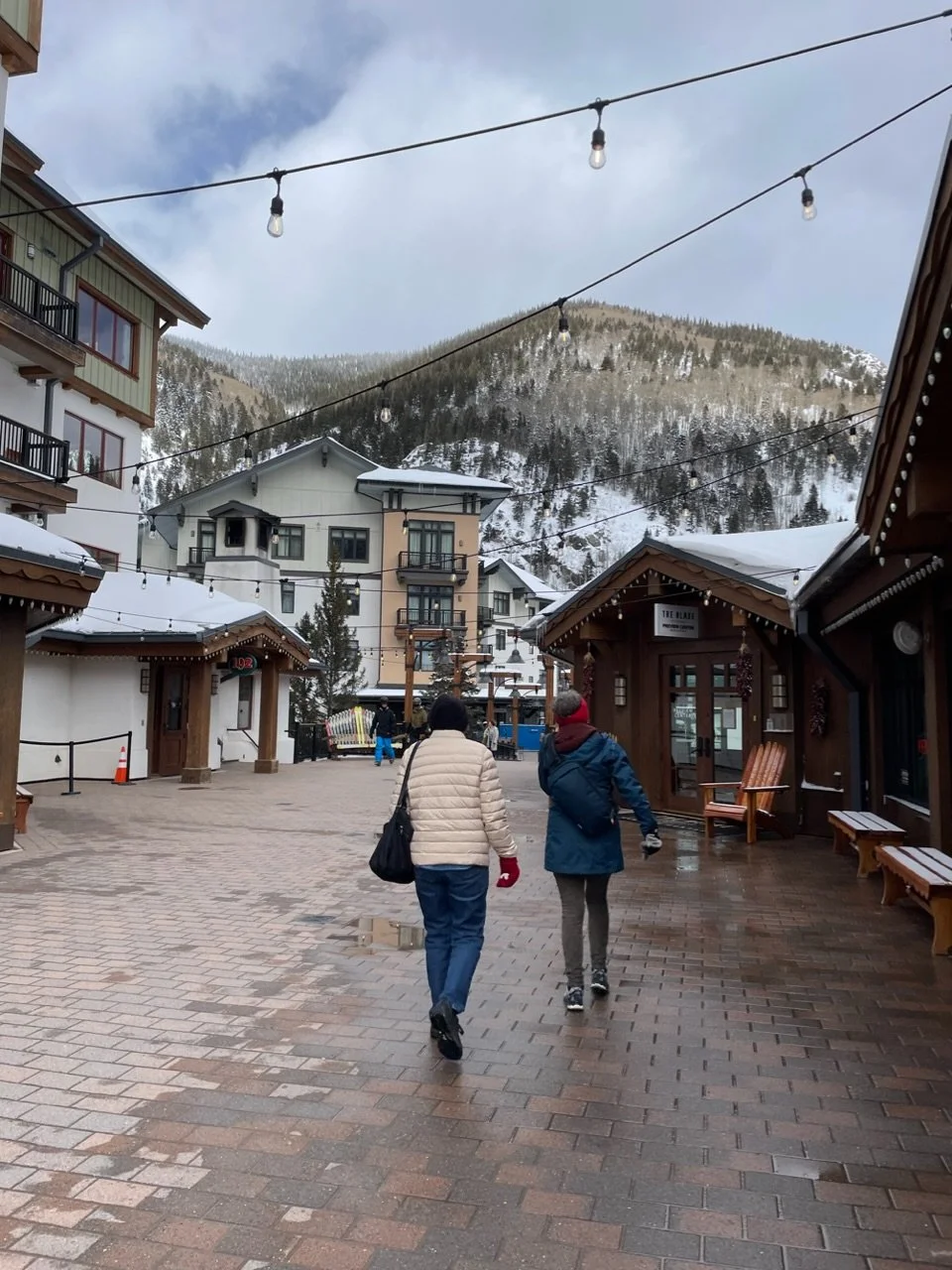
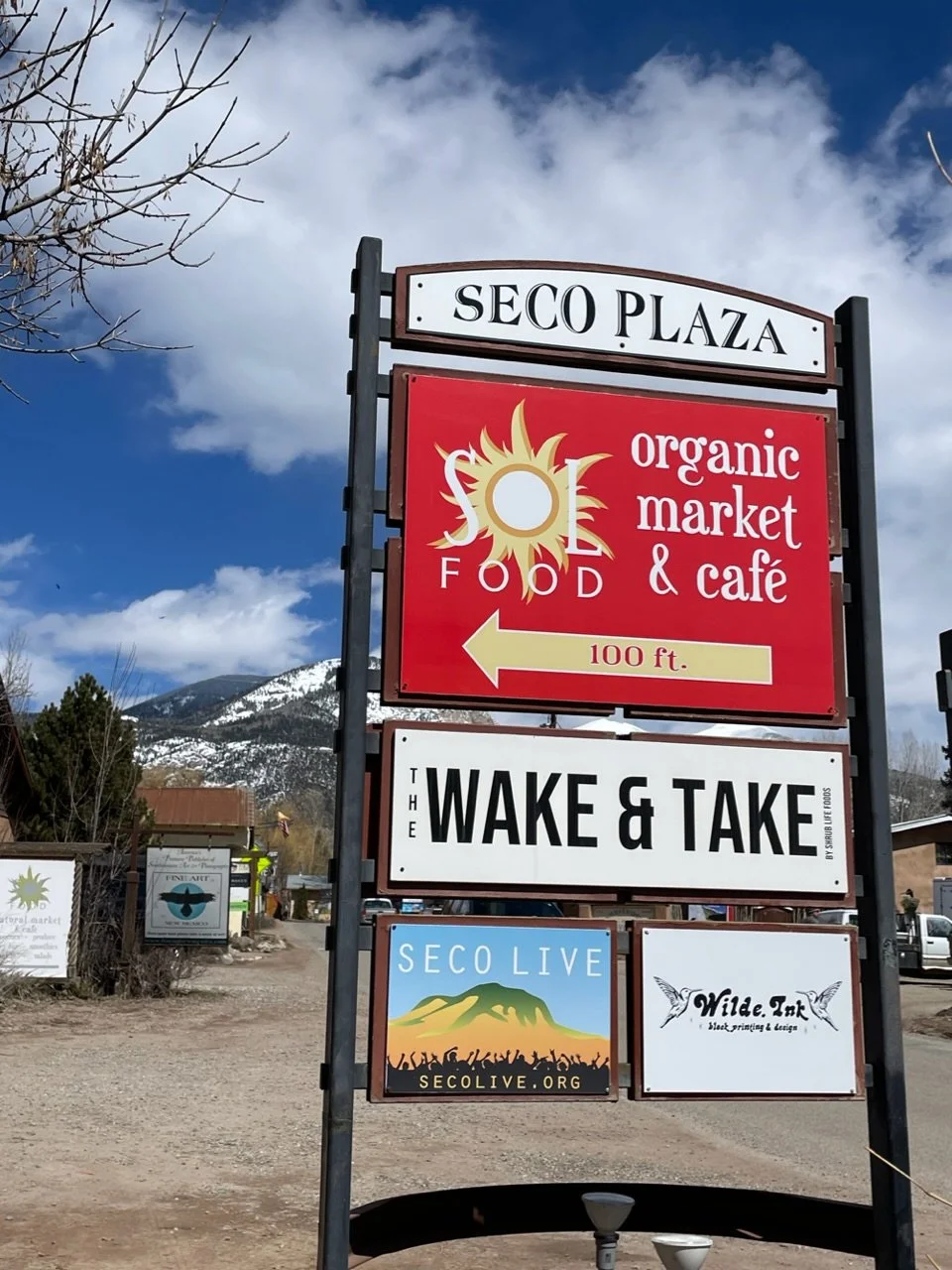
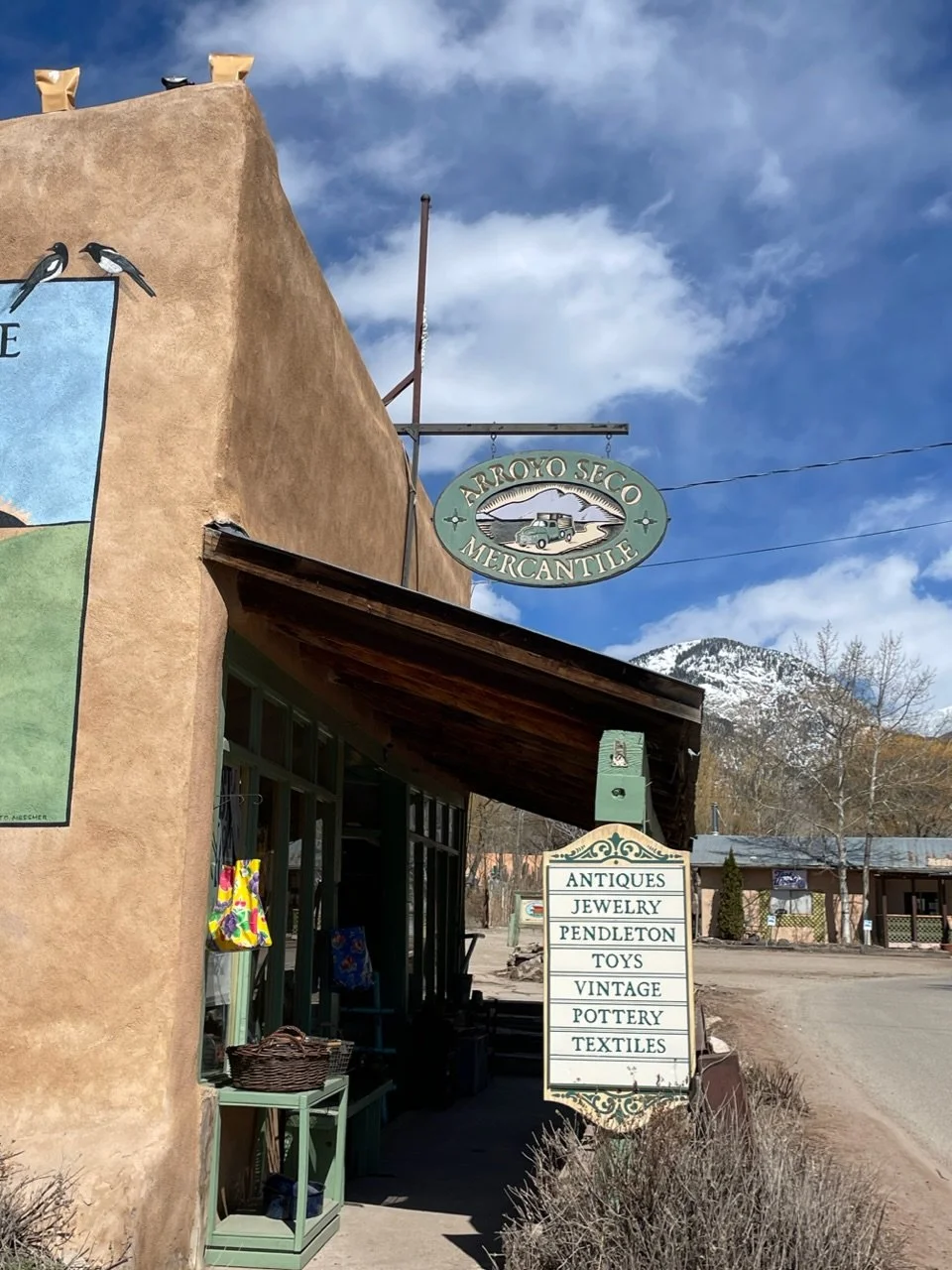
…and points in between. Trip mostly focused on Georgia O’keeffe museum.

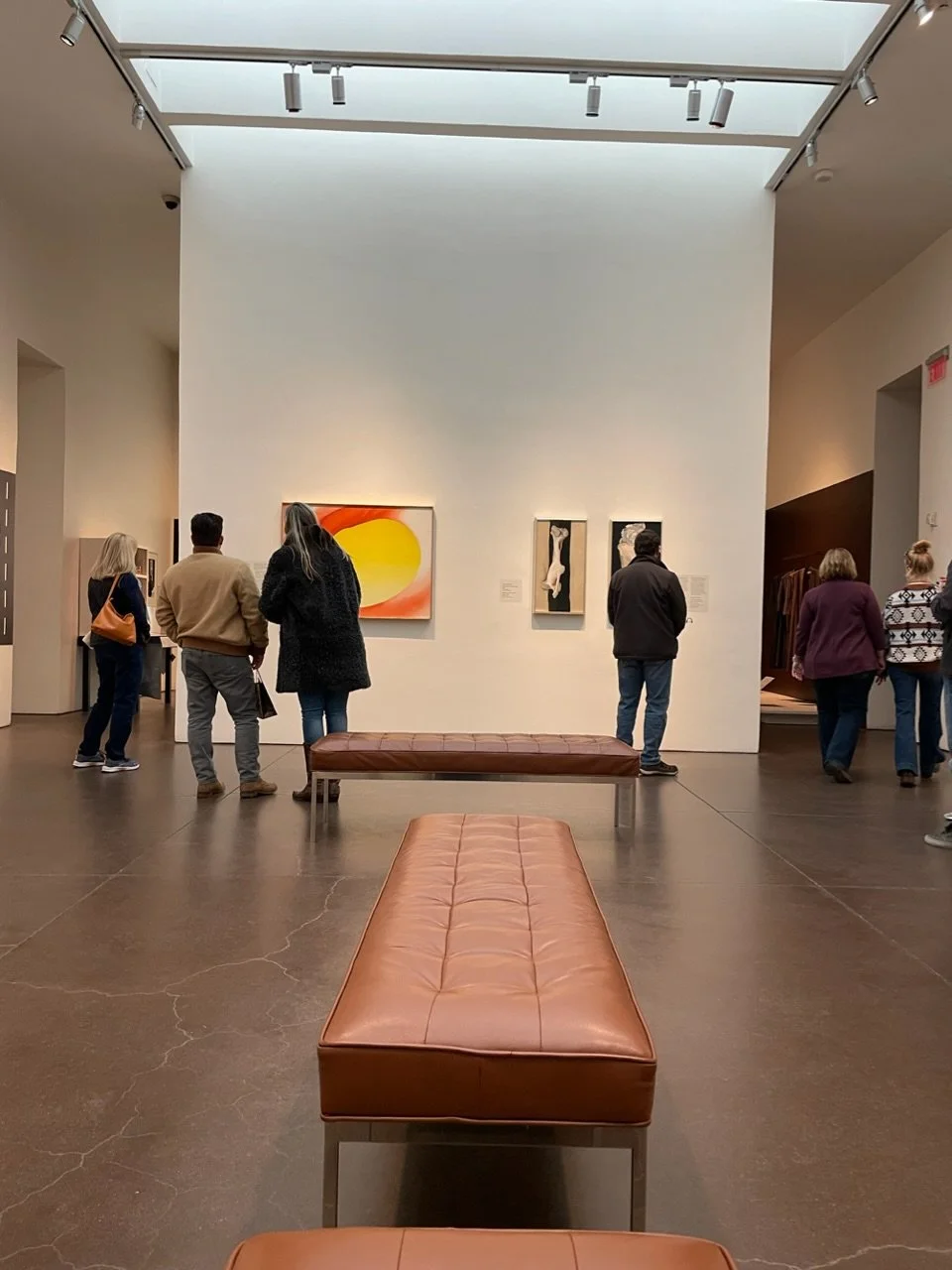
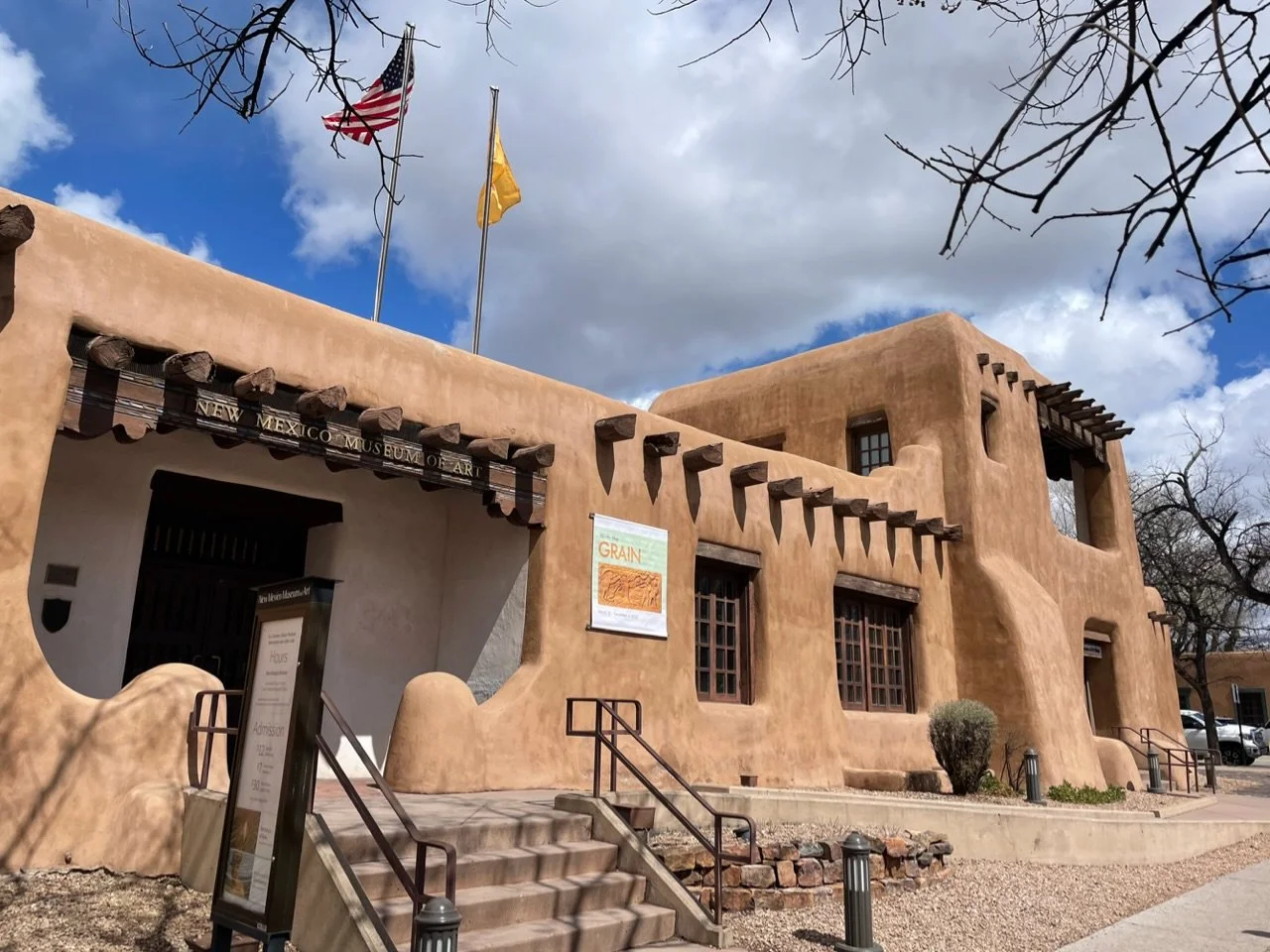

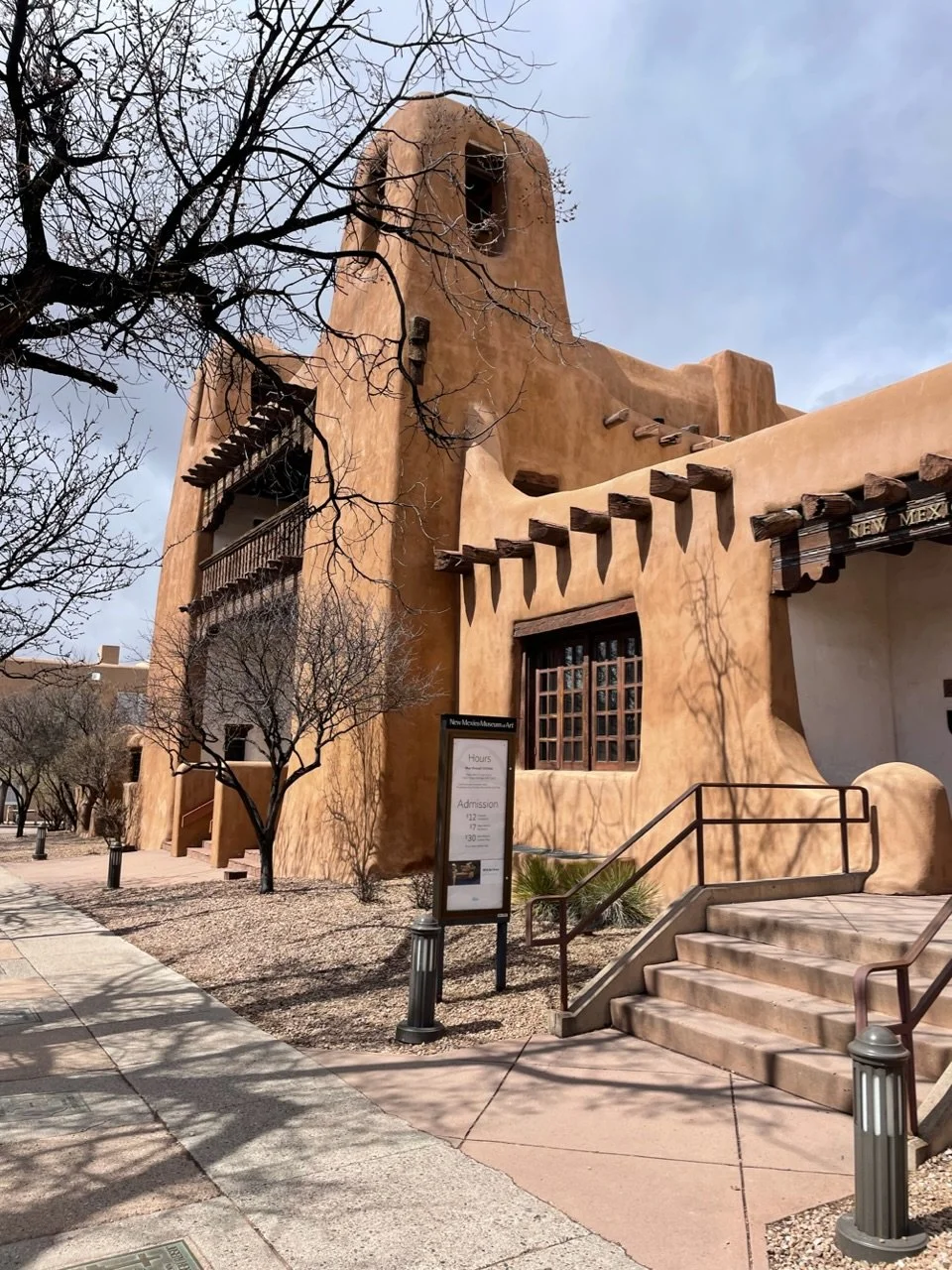

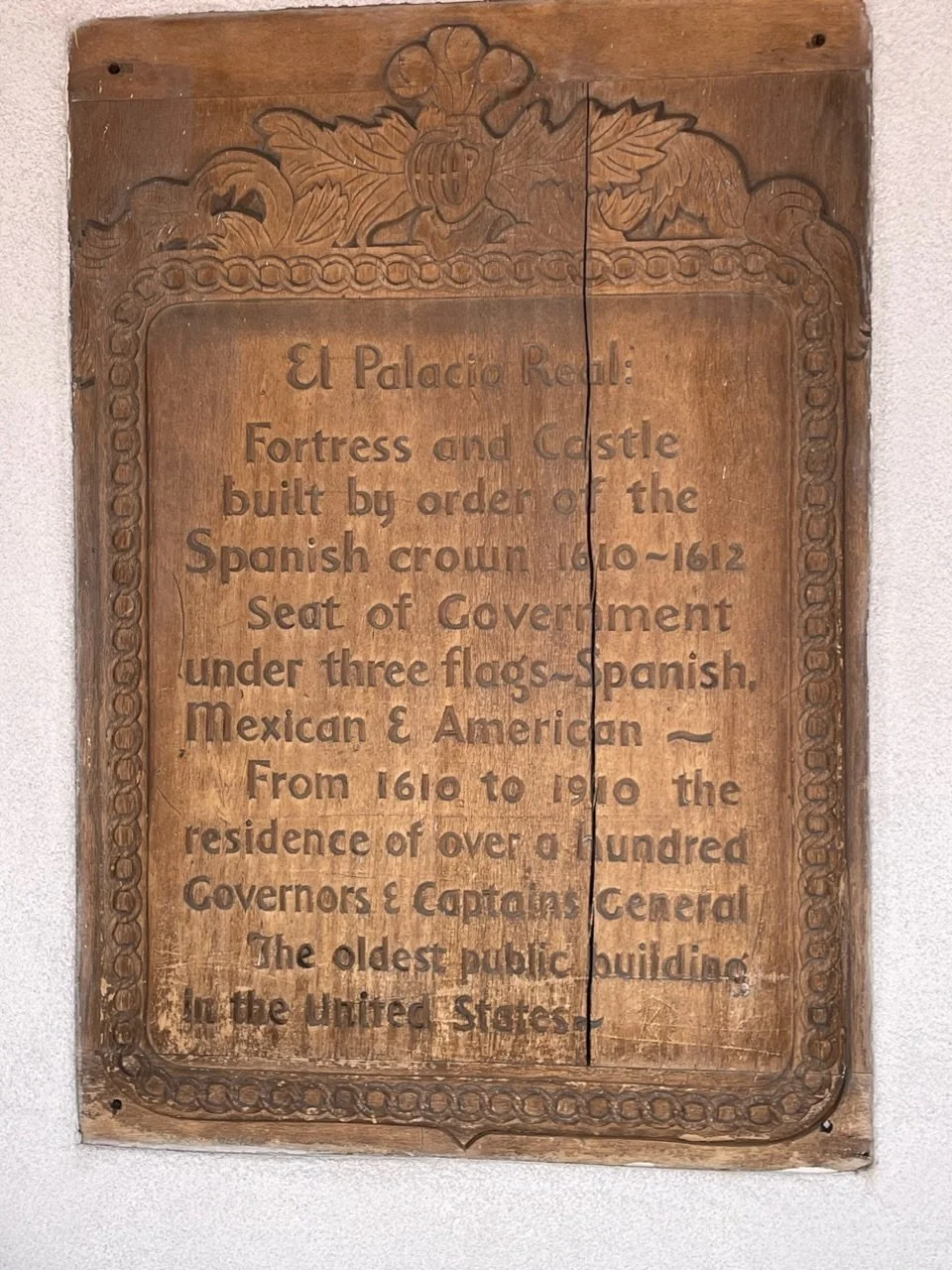
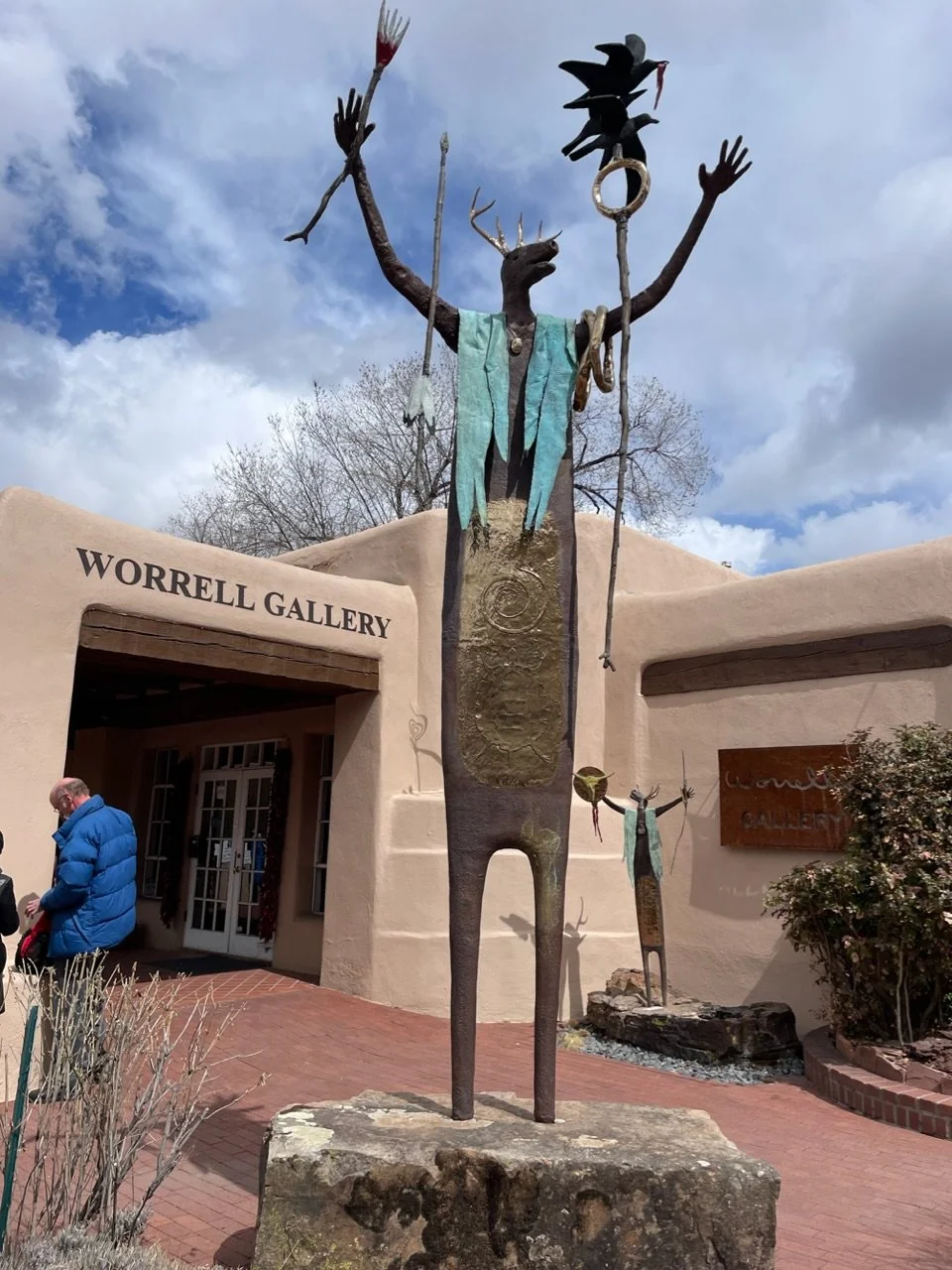
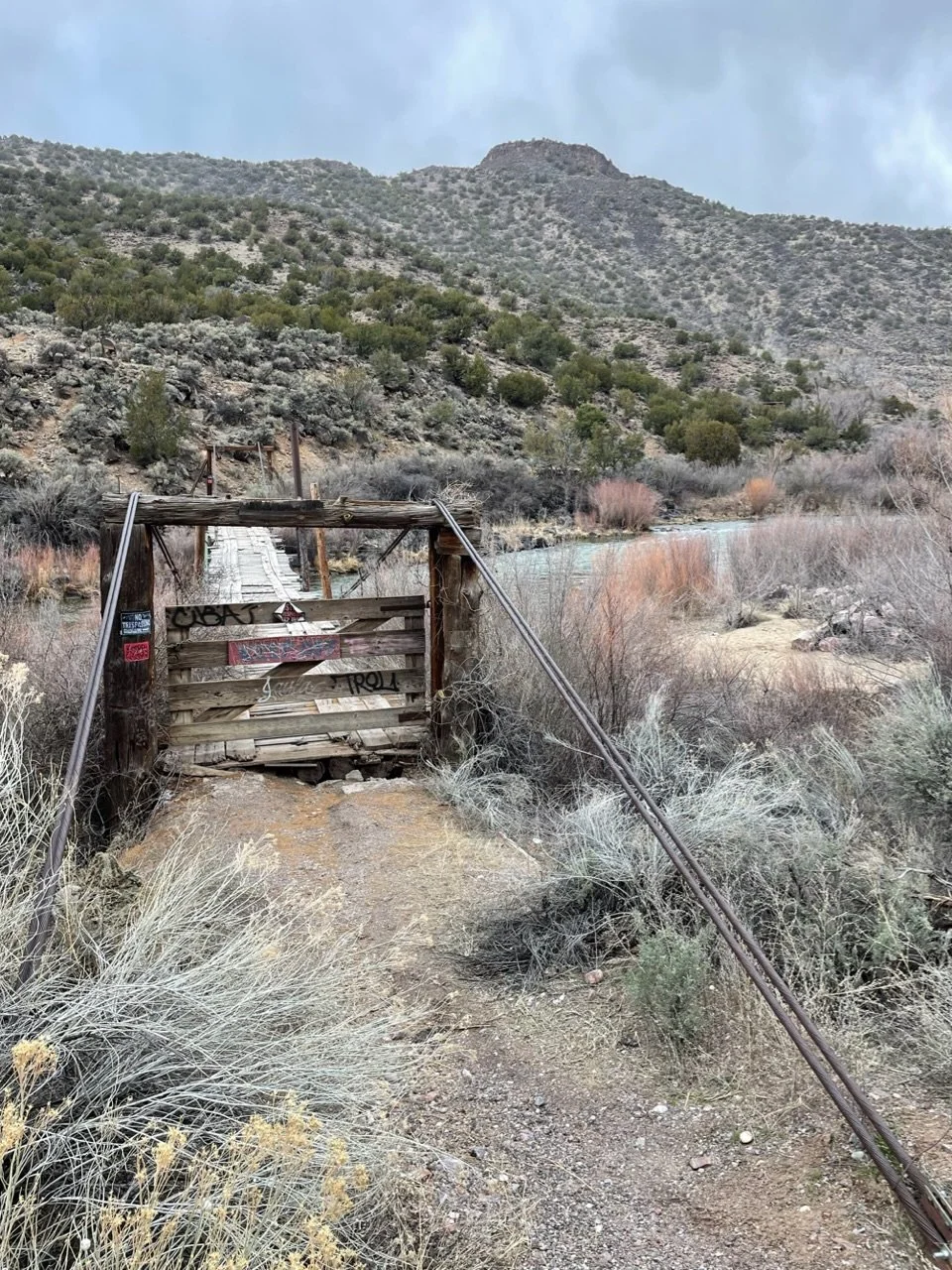
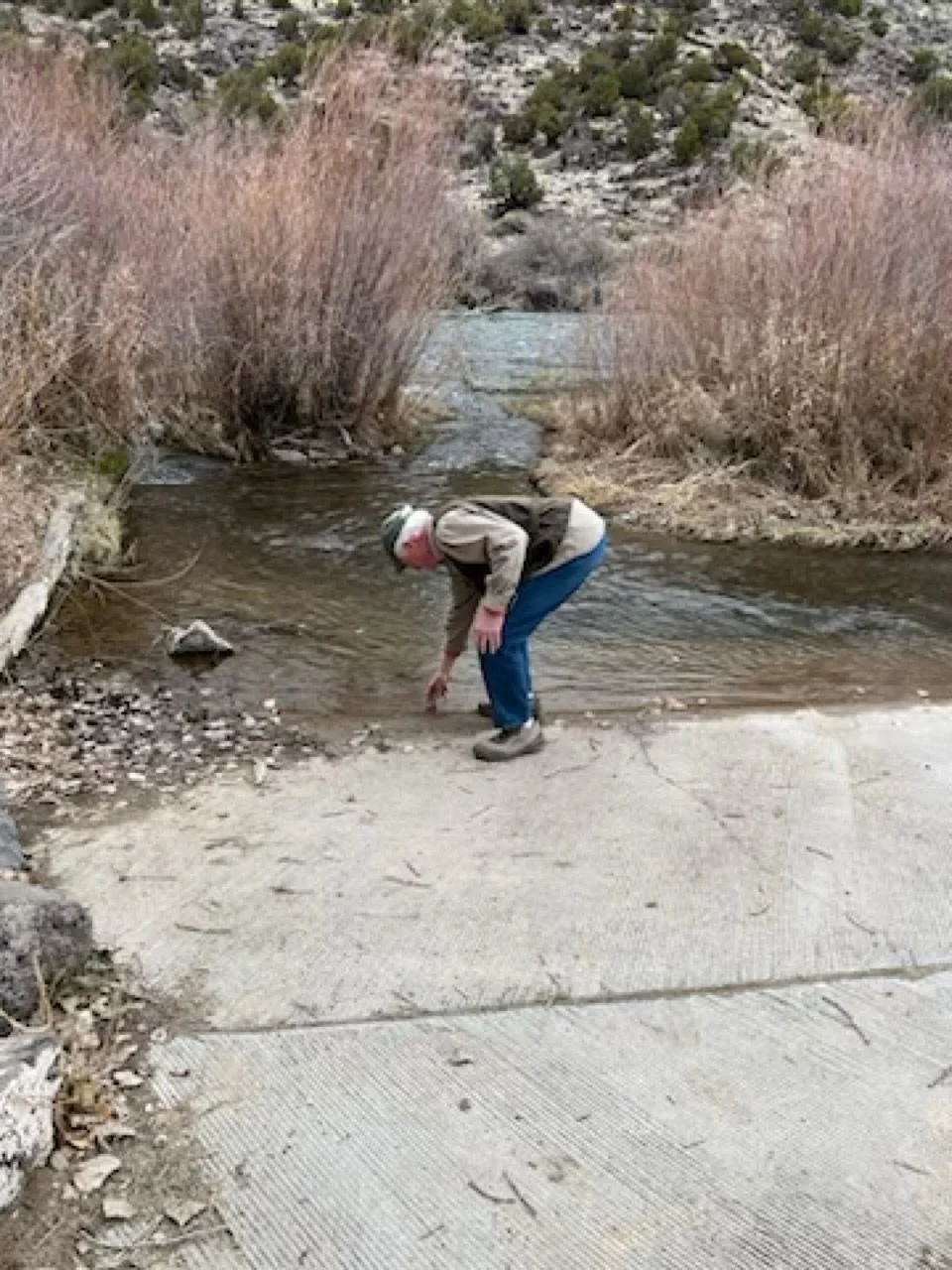
Rio Grande gorge, the Earthships, old Taos, and for dinner, the oddly named Love Apple


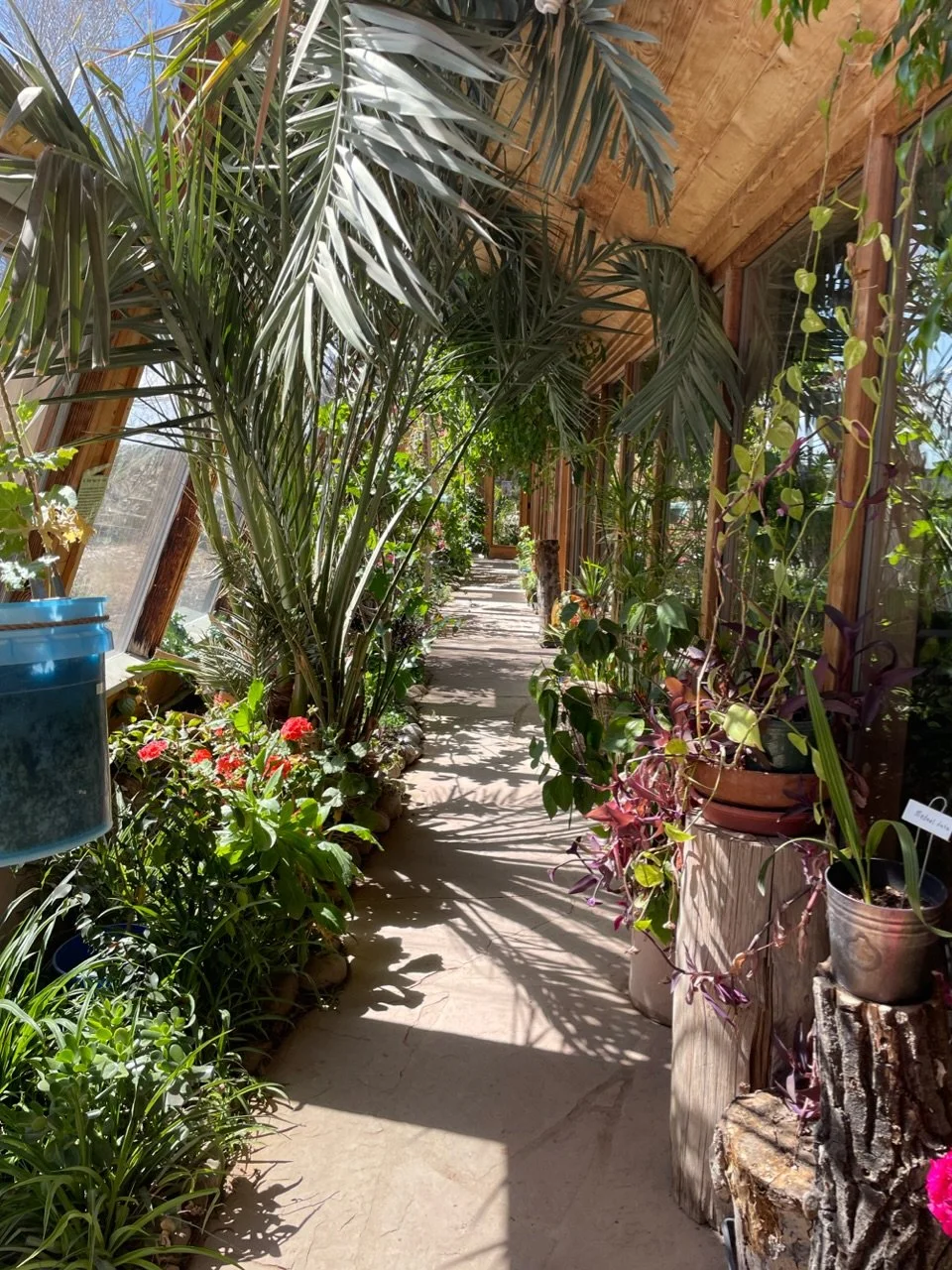
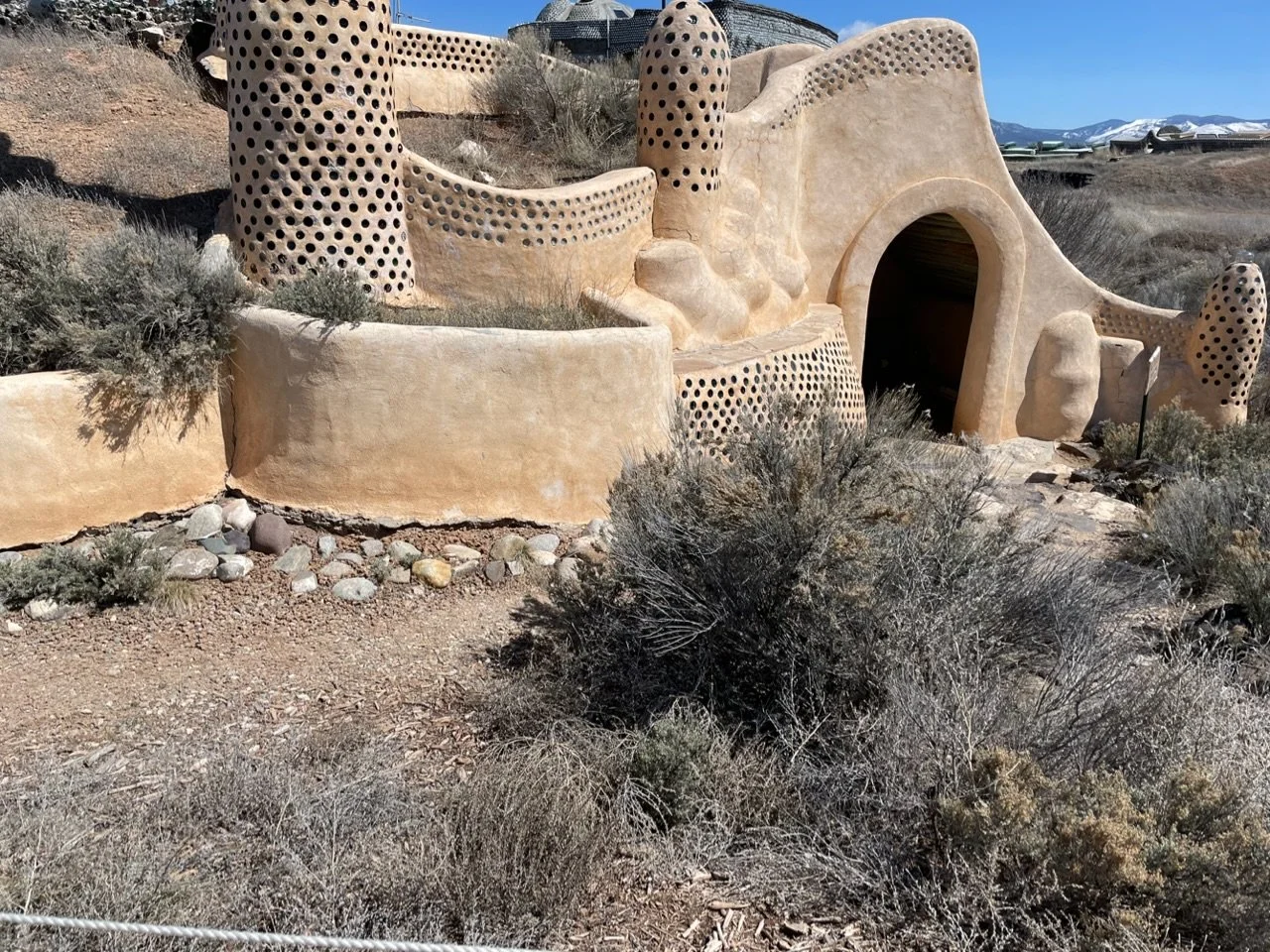

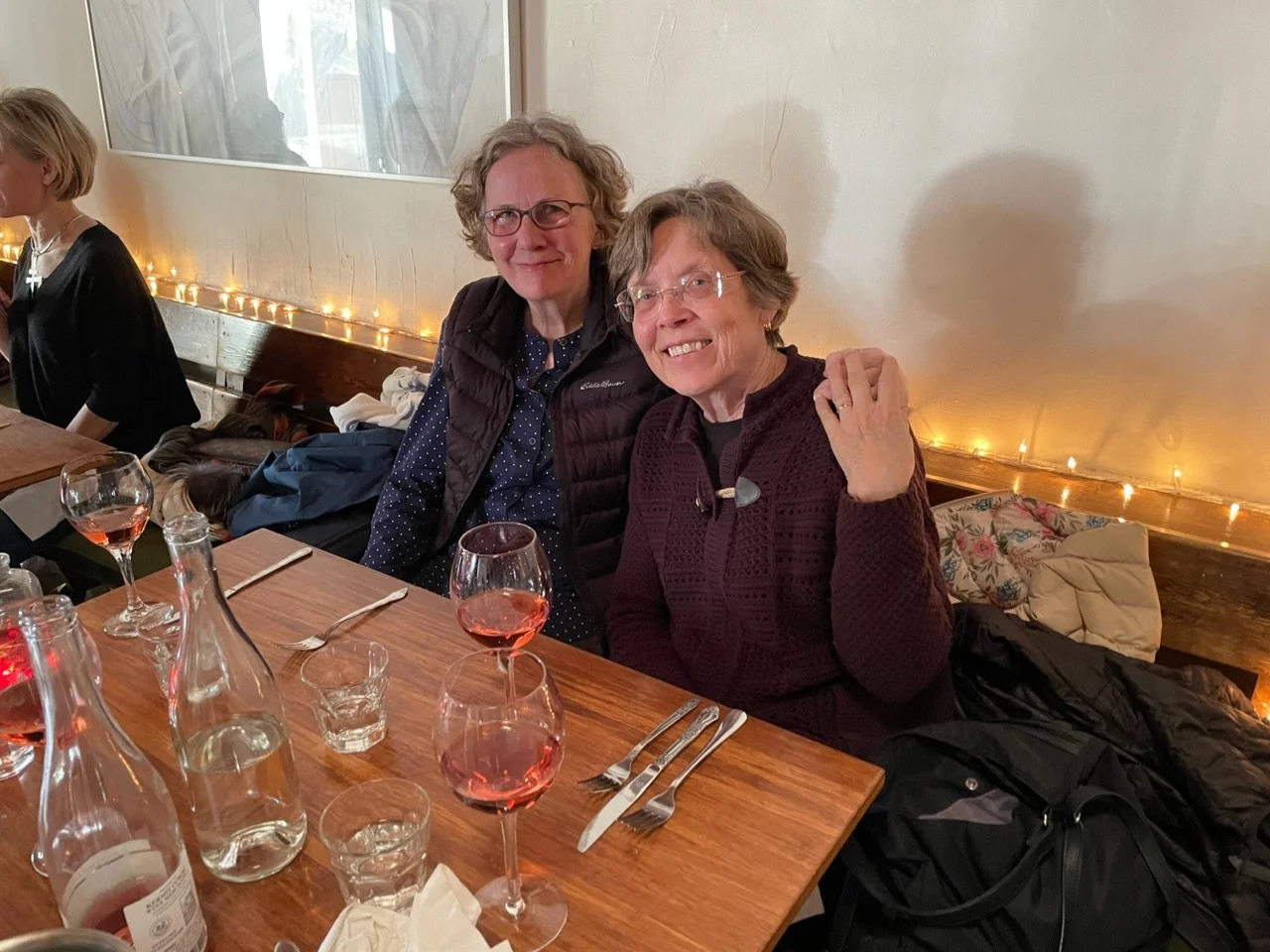

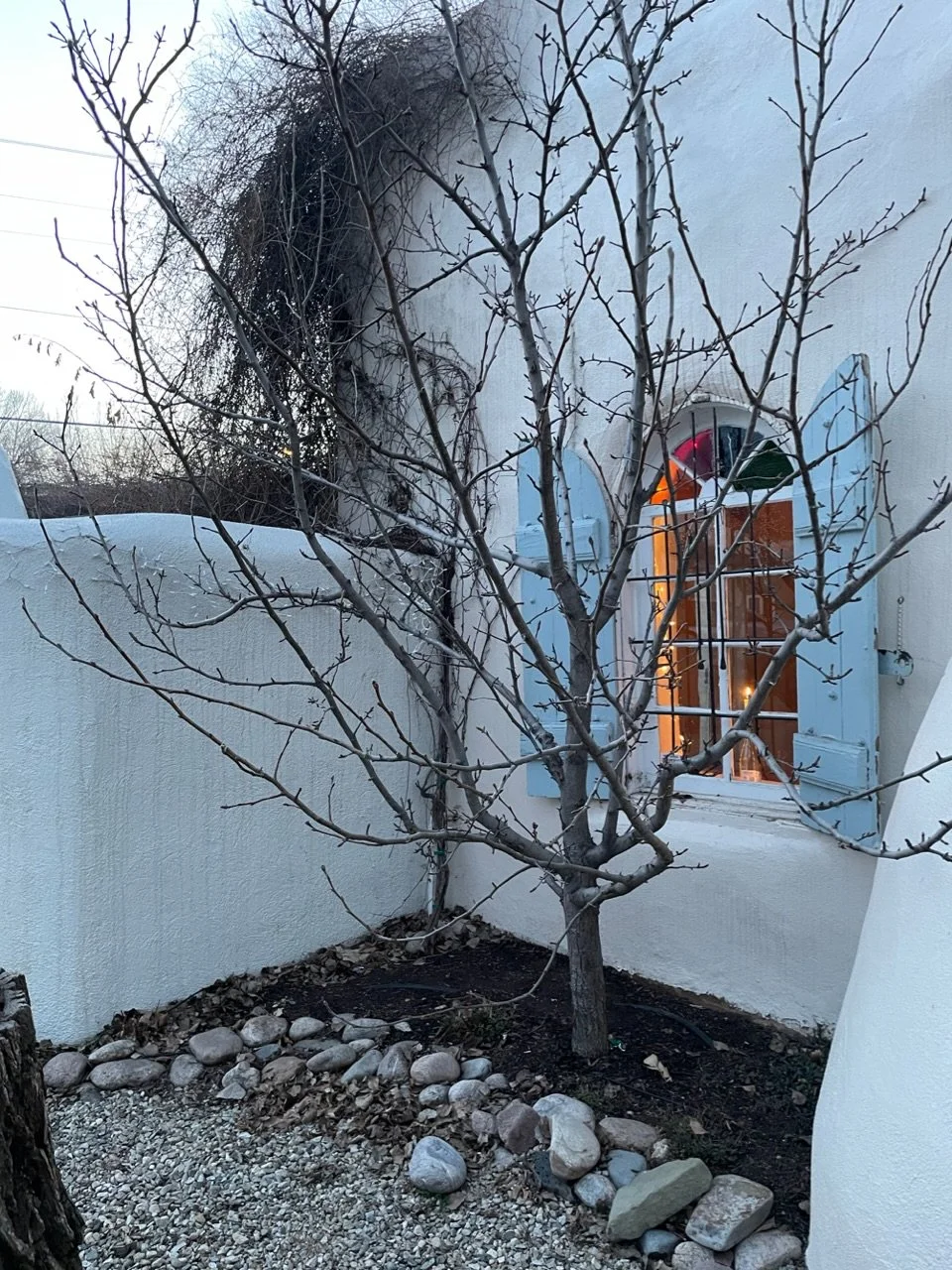
After a beautiful mountain drive. 7,700 feet, and light snow on arrival. Very nice hacienda.
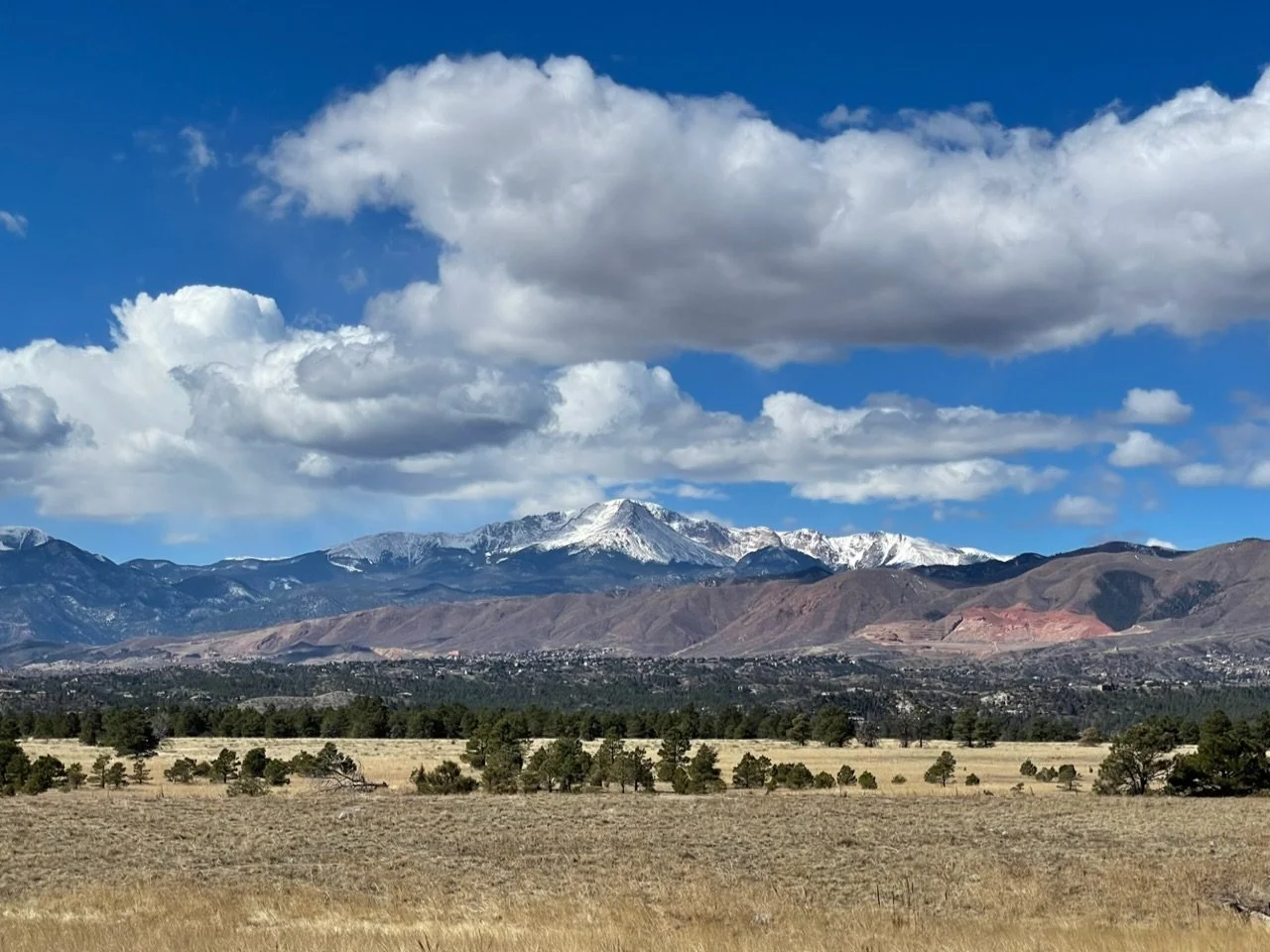



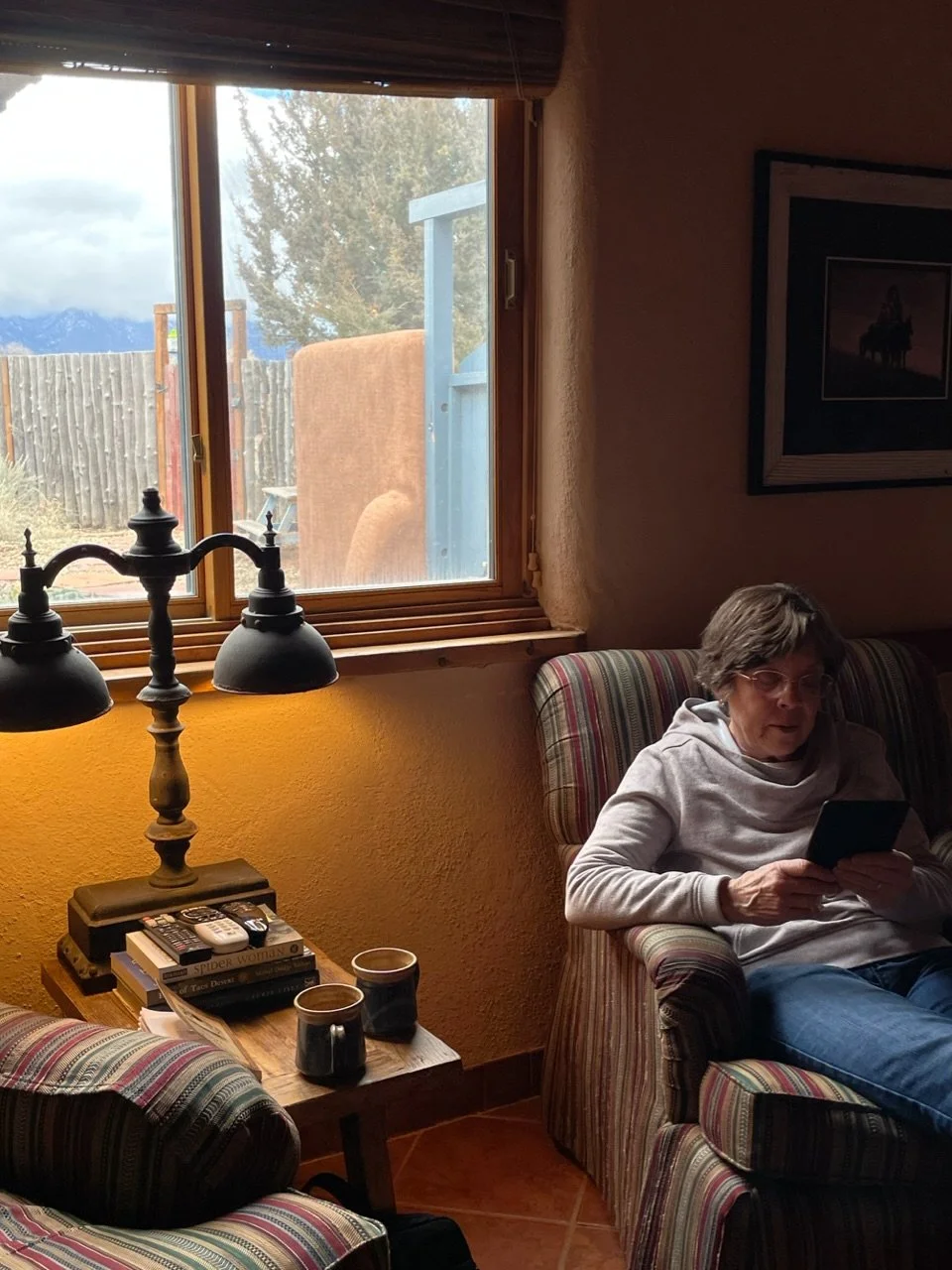

Quiz: name this painter, and the artist who made the mobile behind her.
Air travel not high on the list, but we made it. Fun supper in the hotel pub.
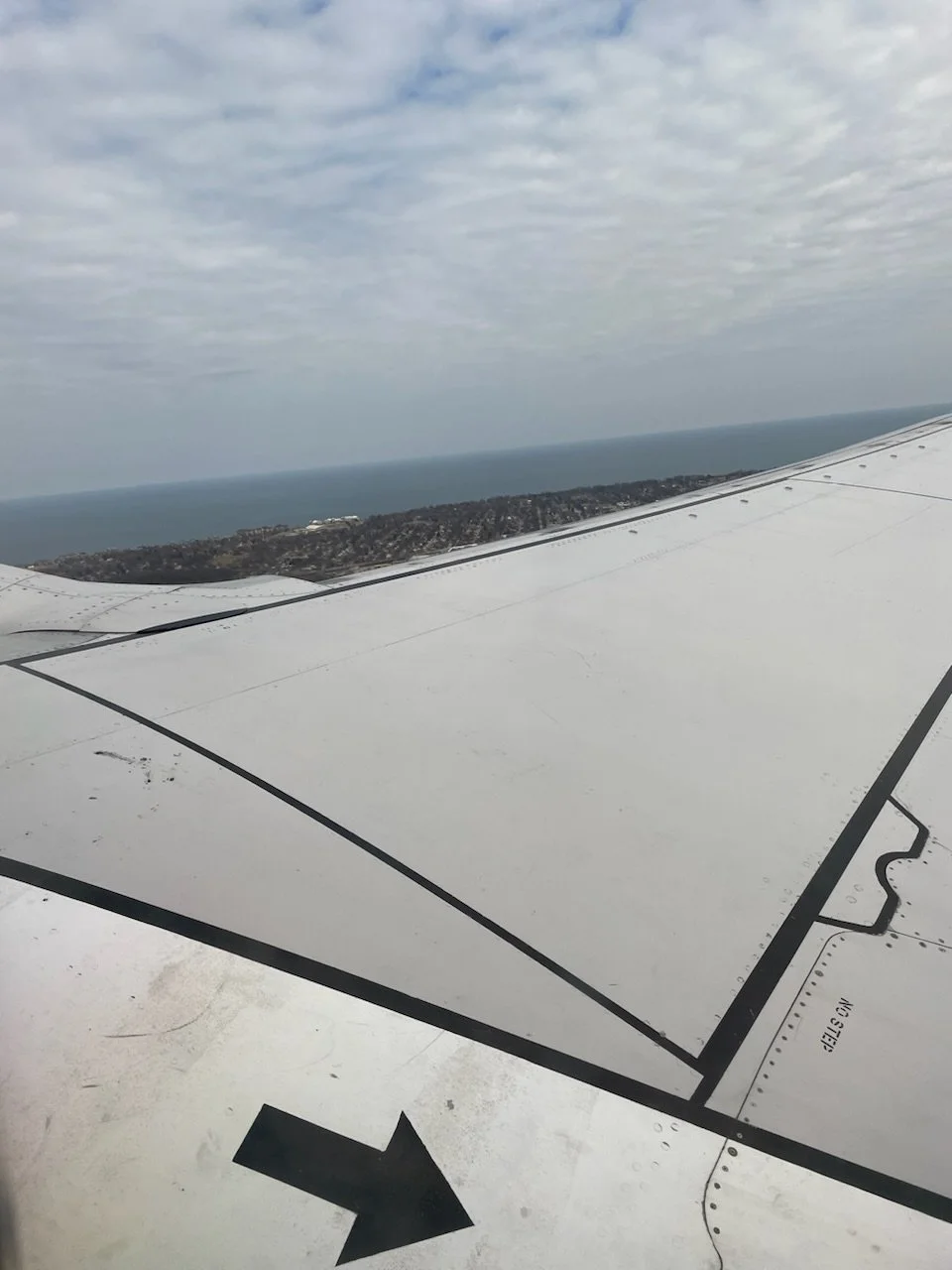
Above, departing MKE.